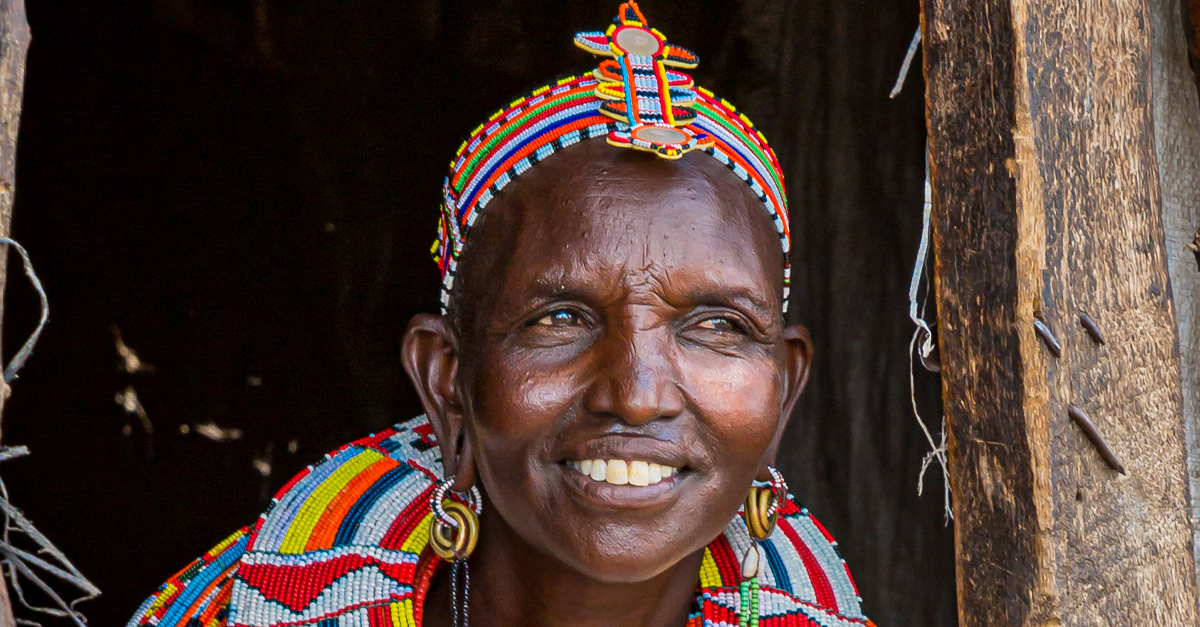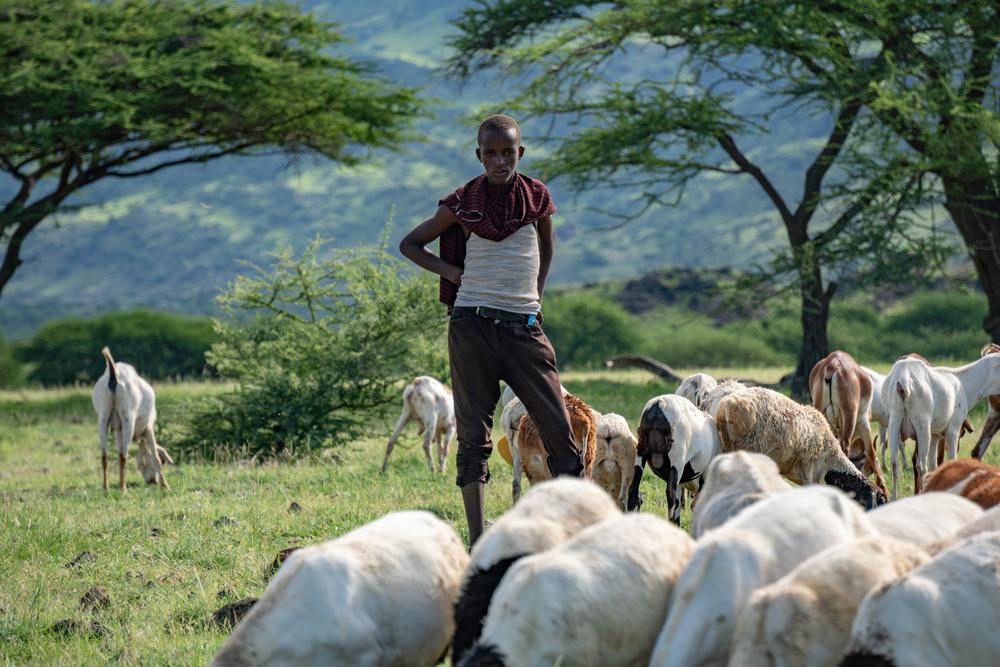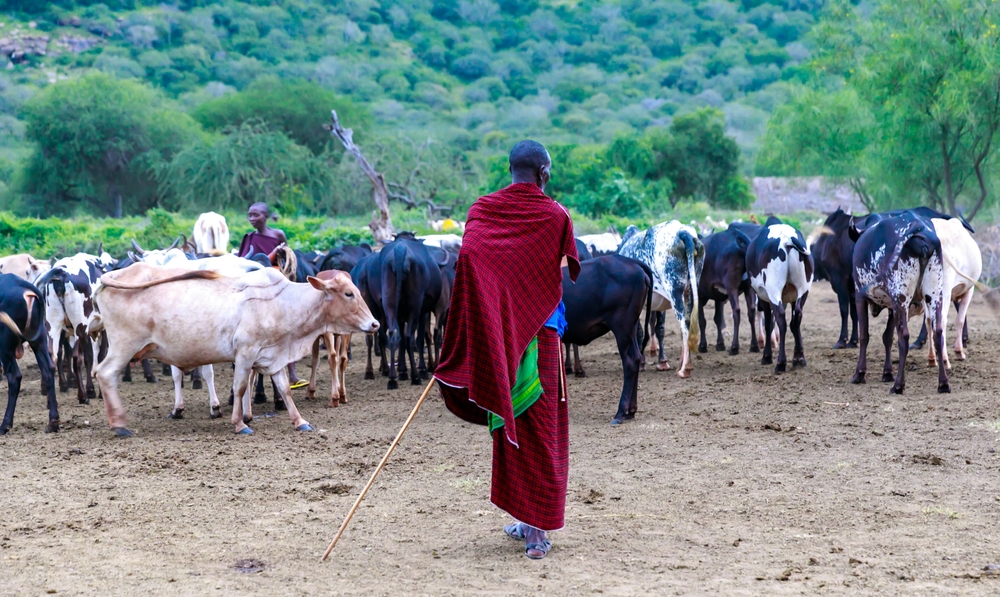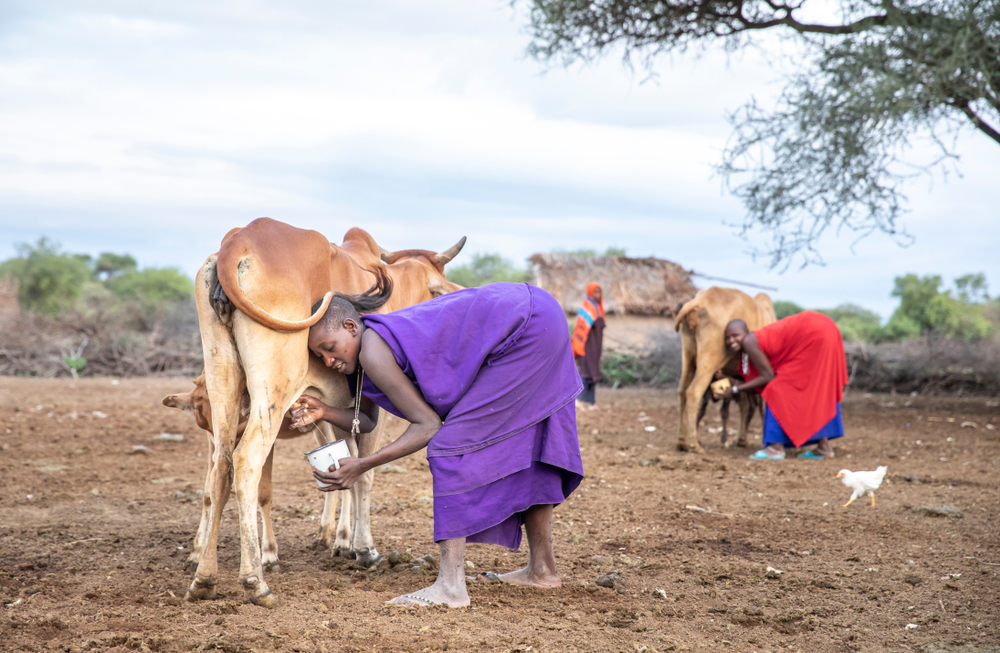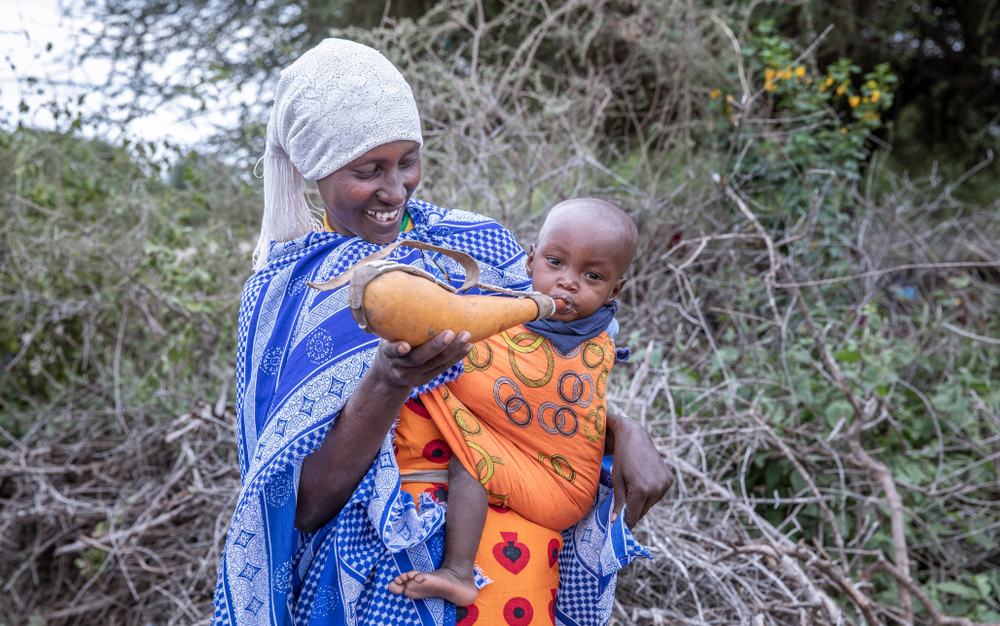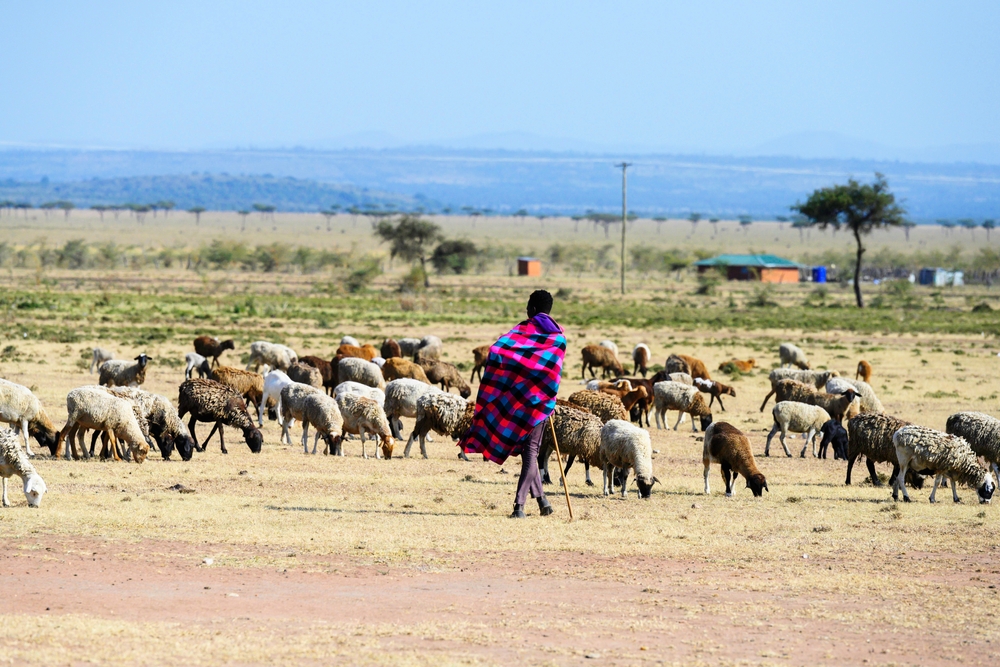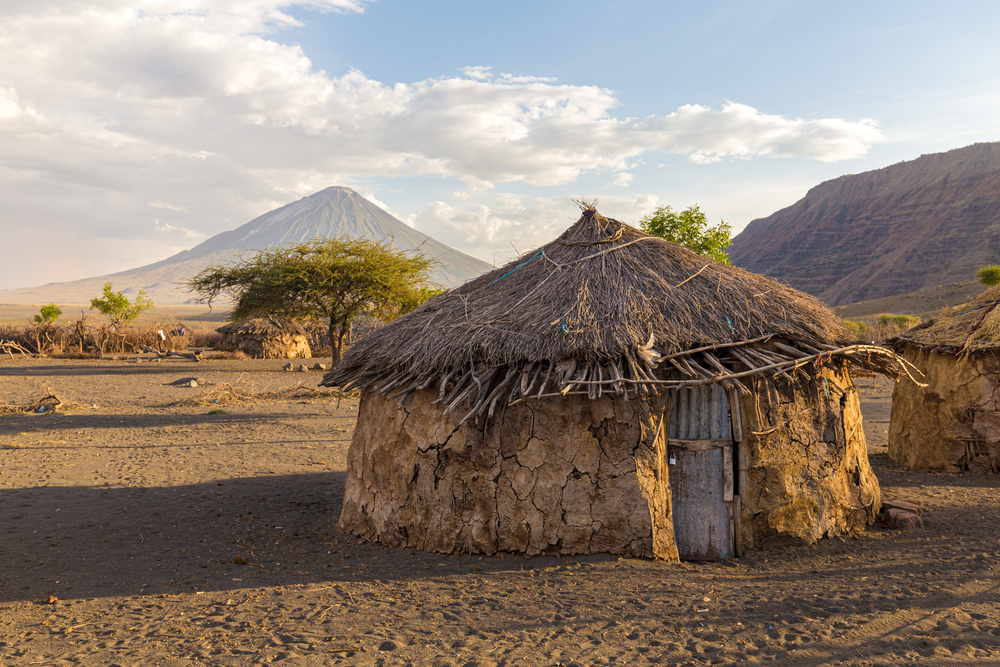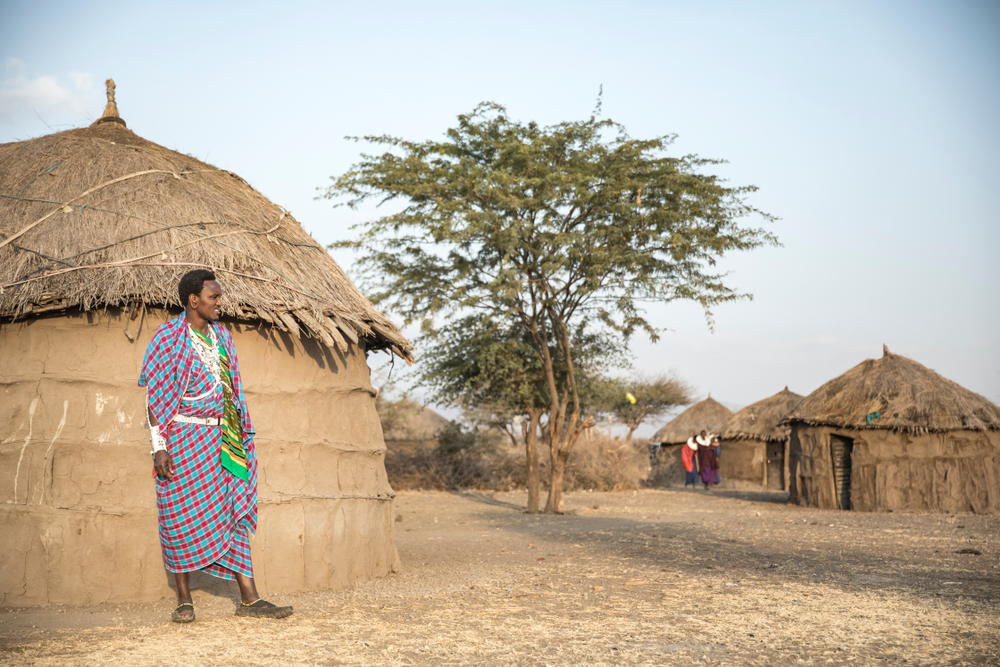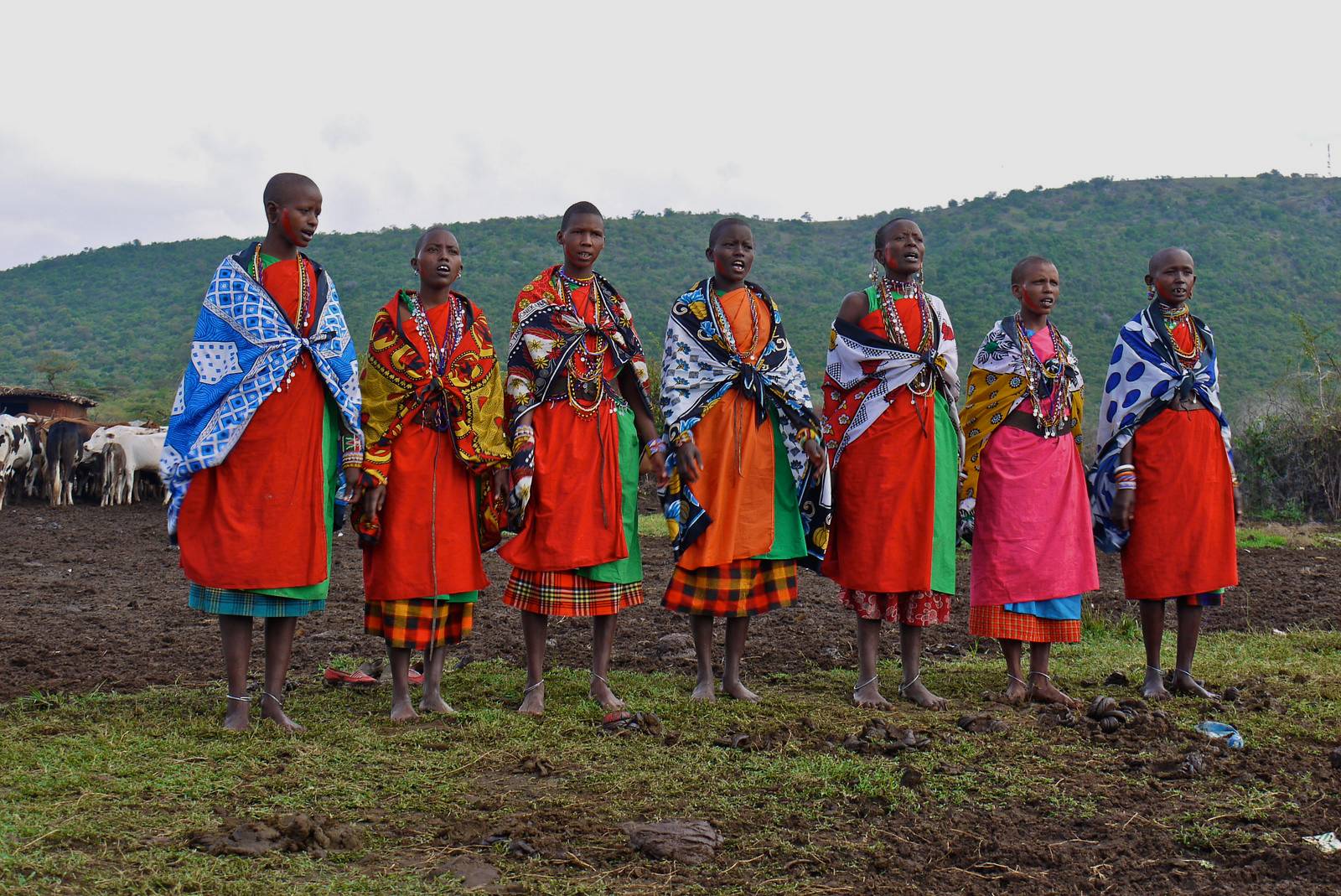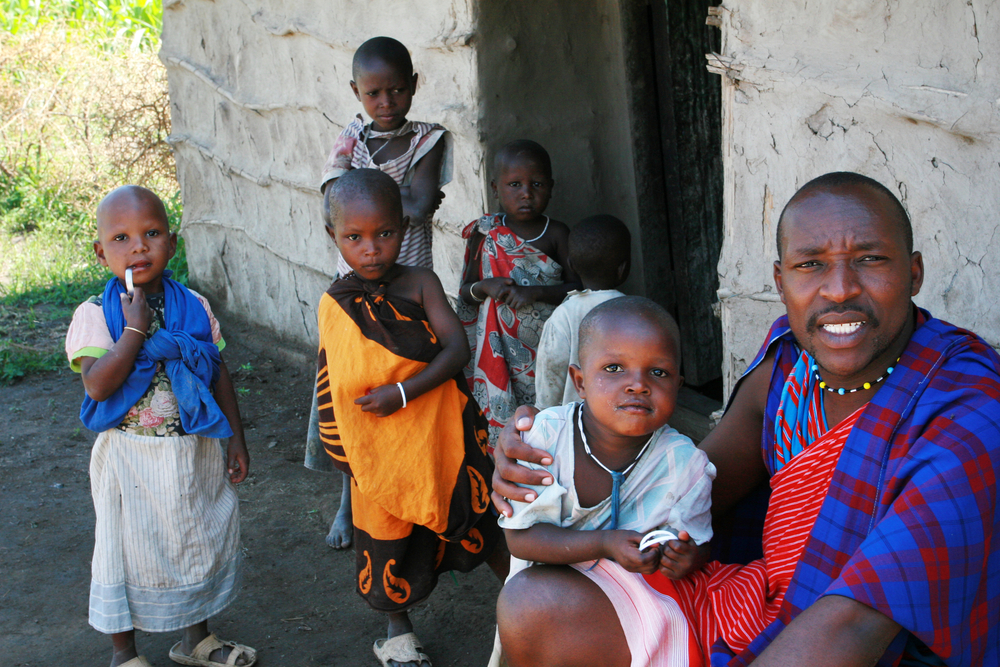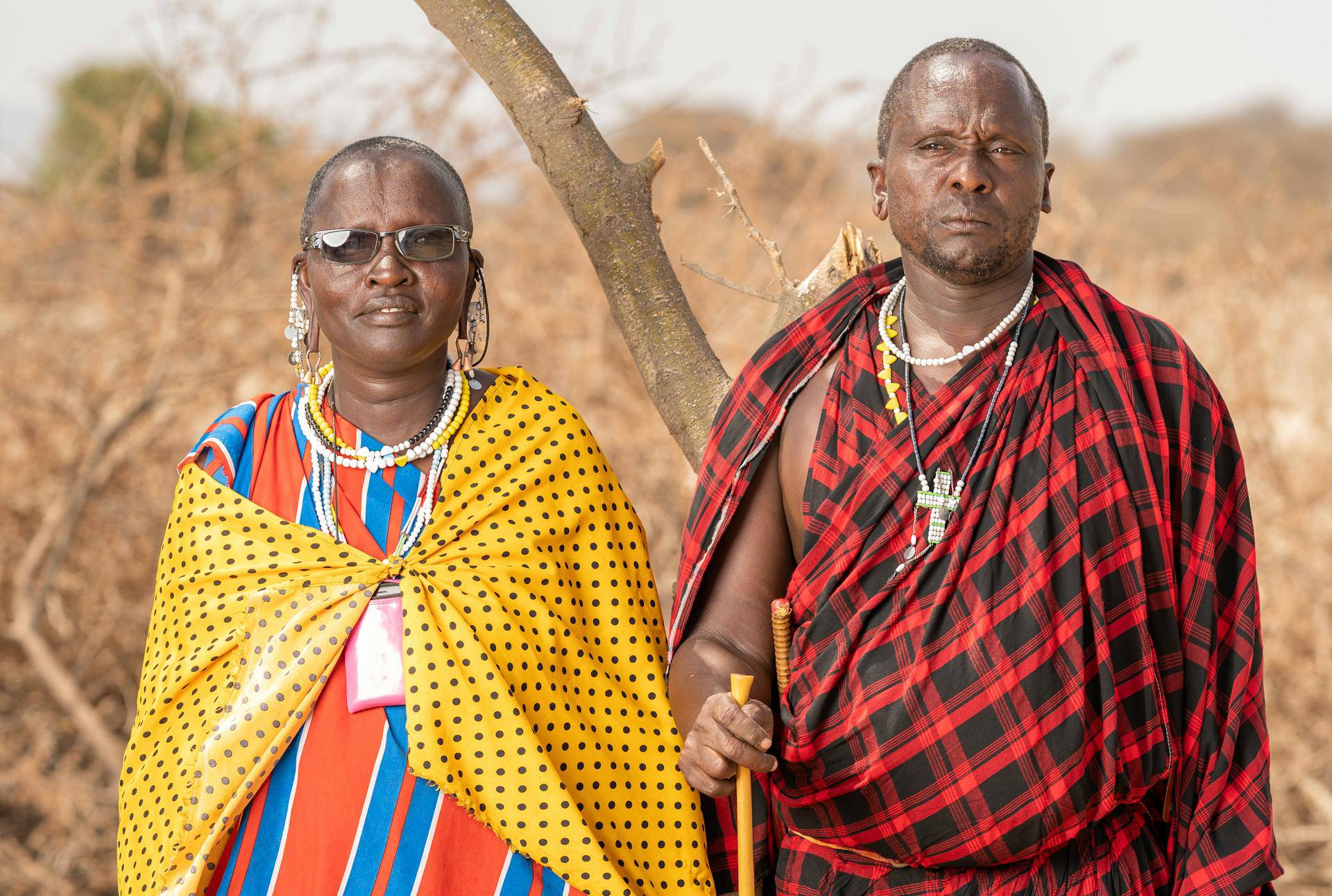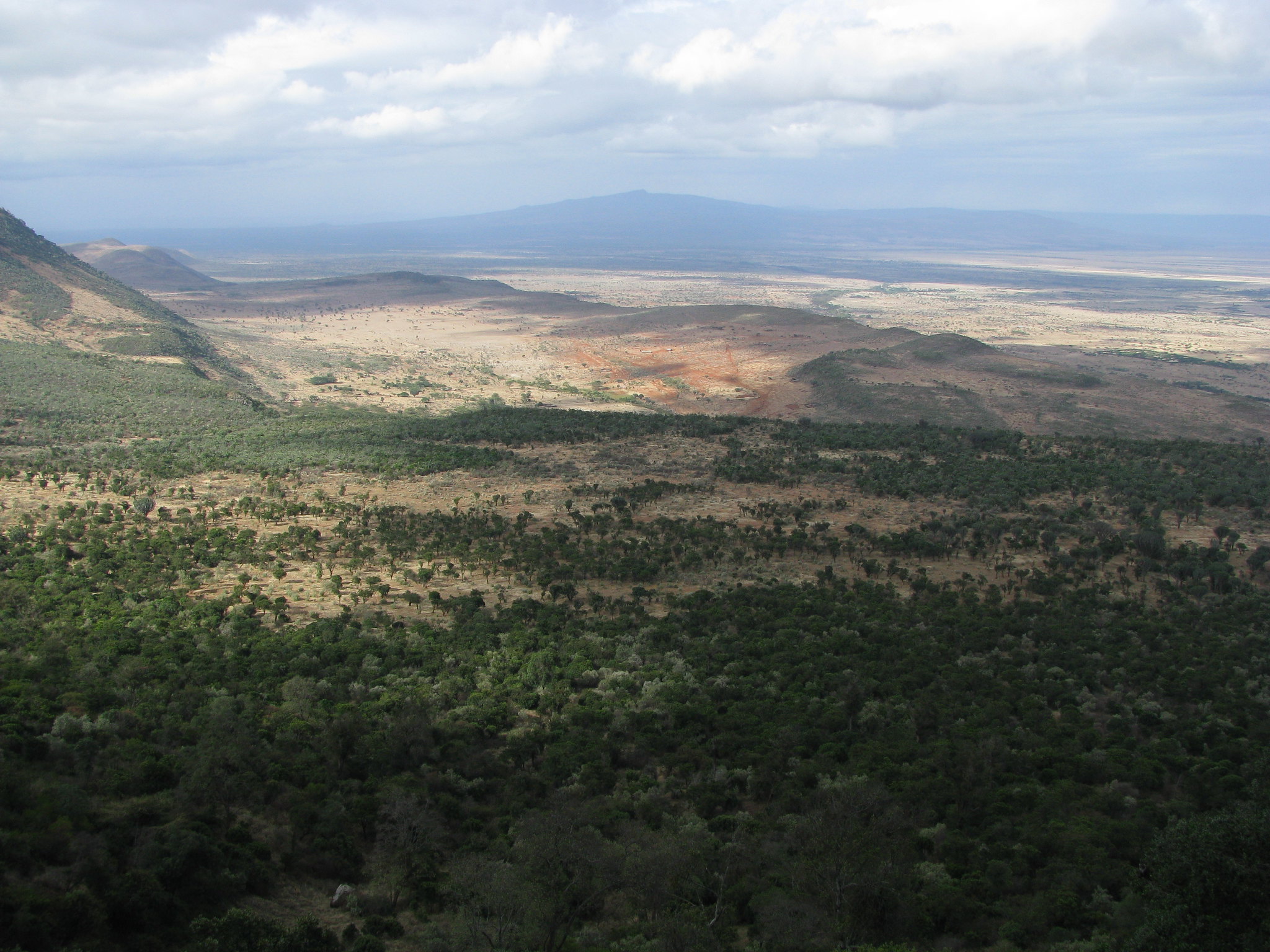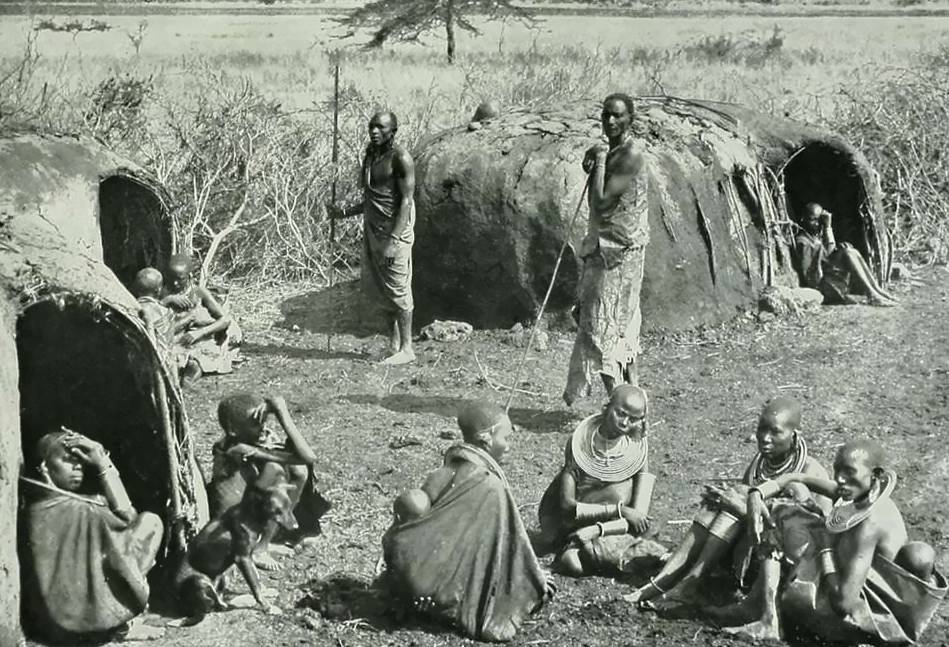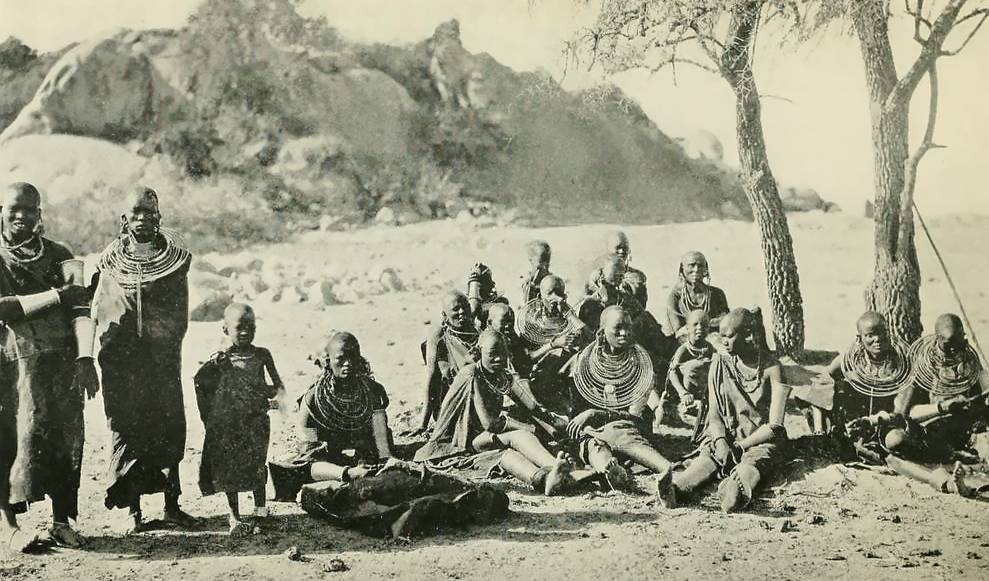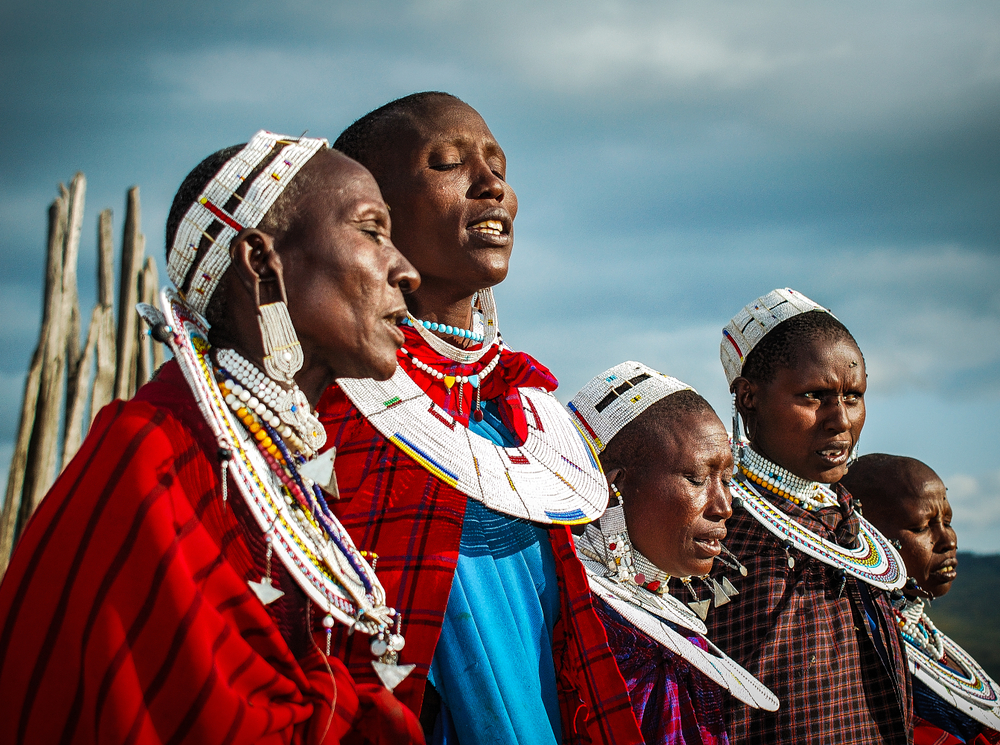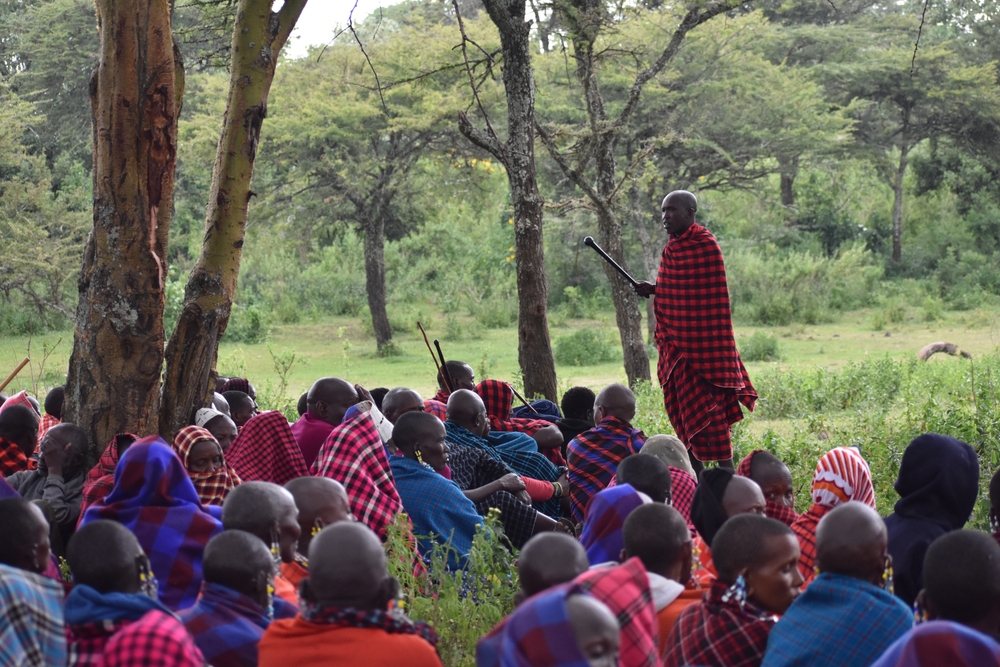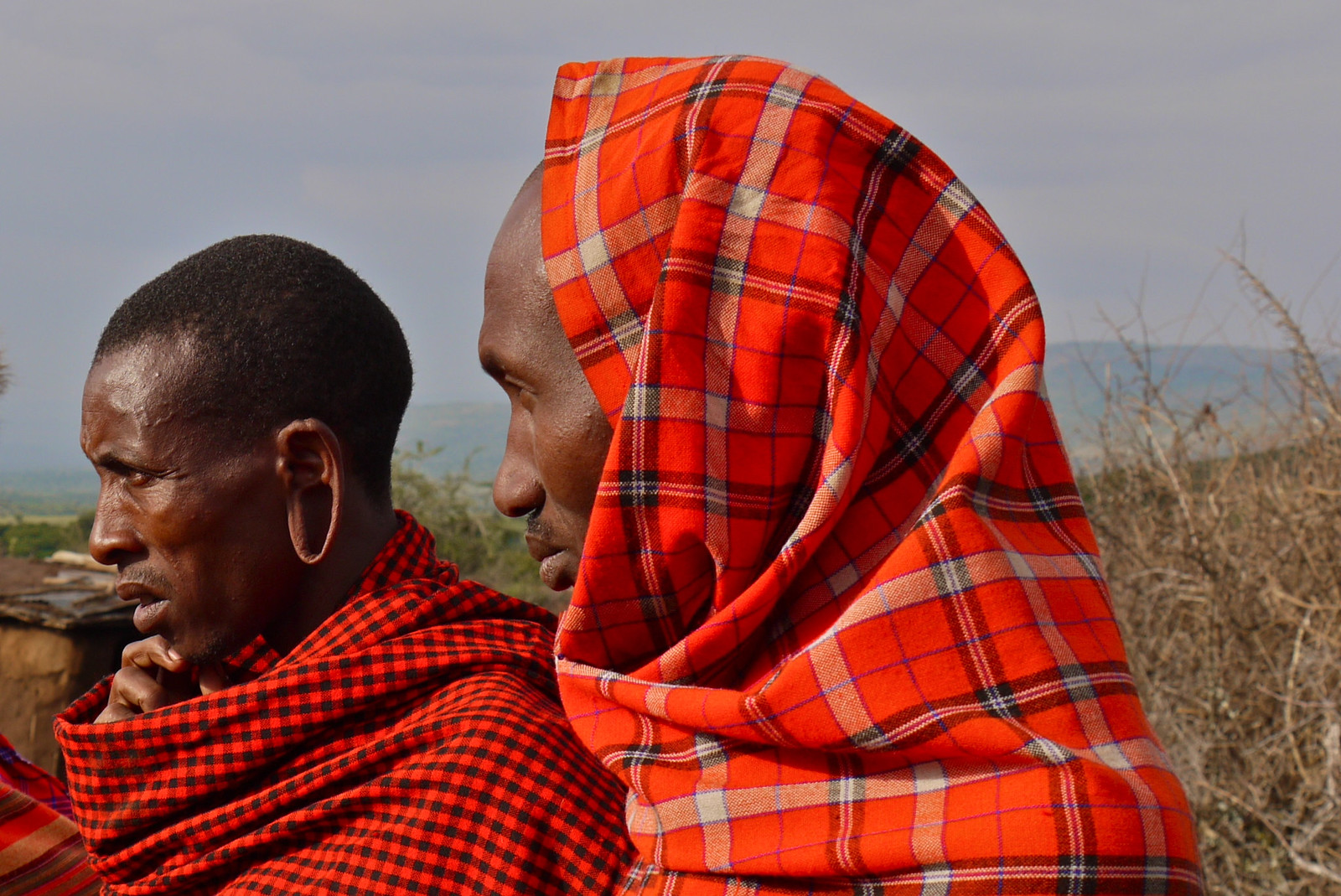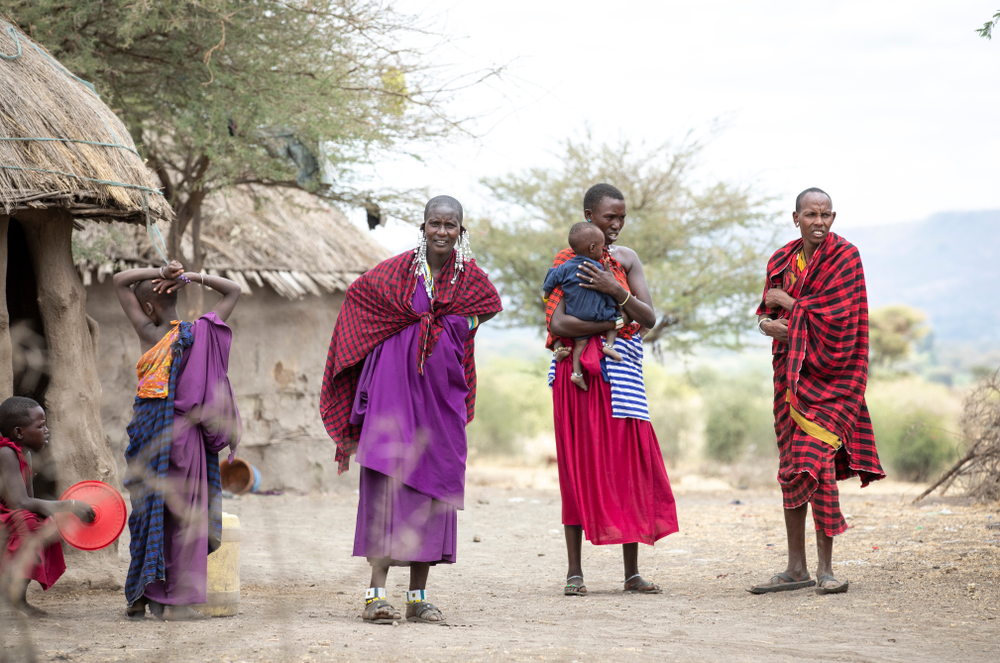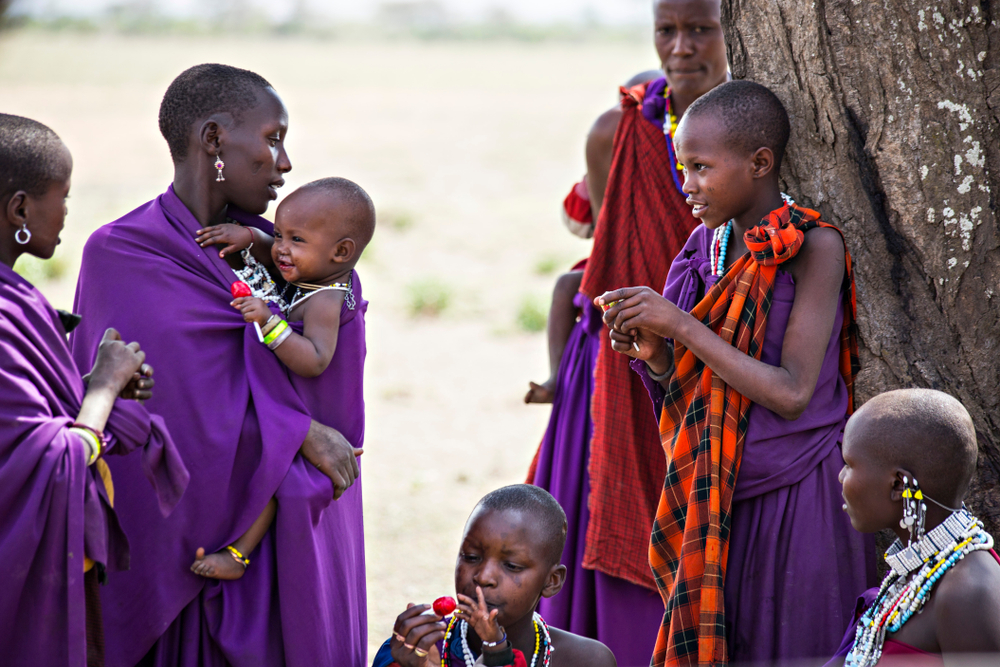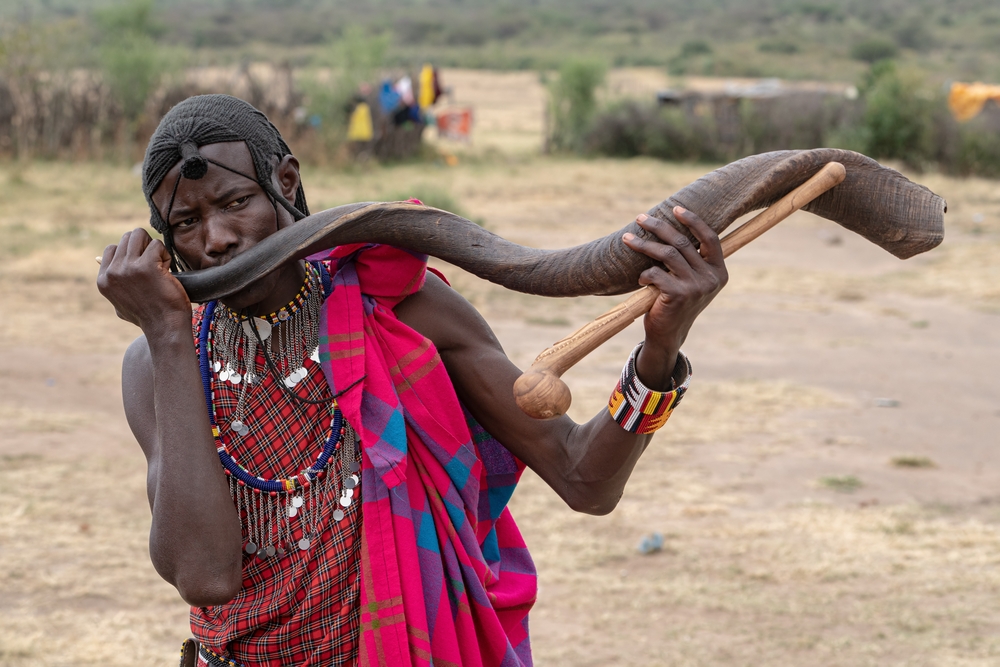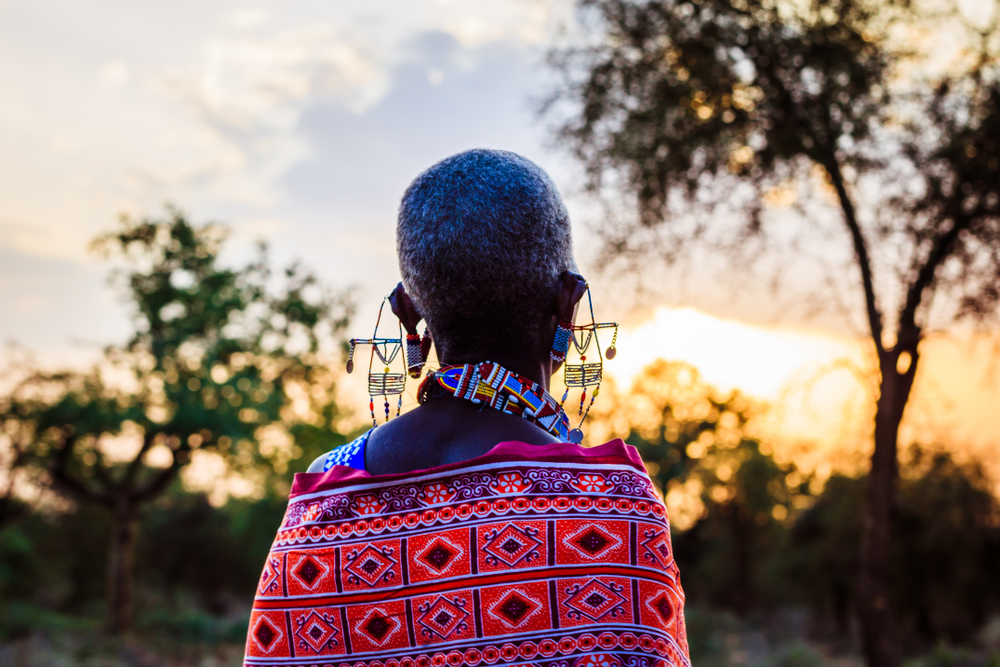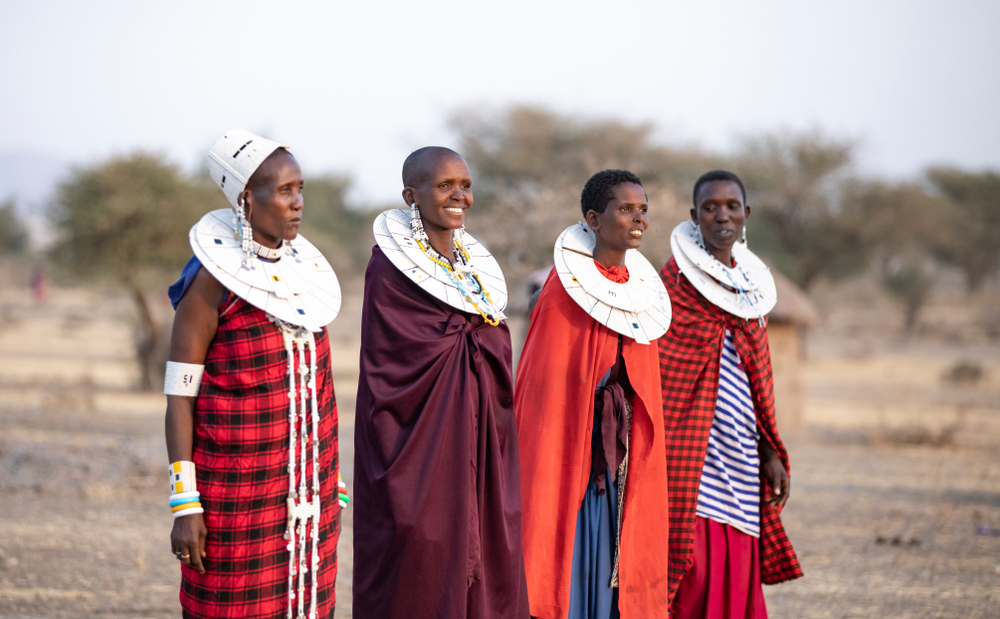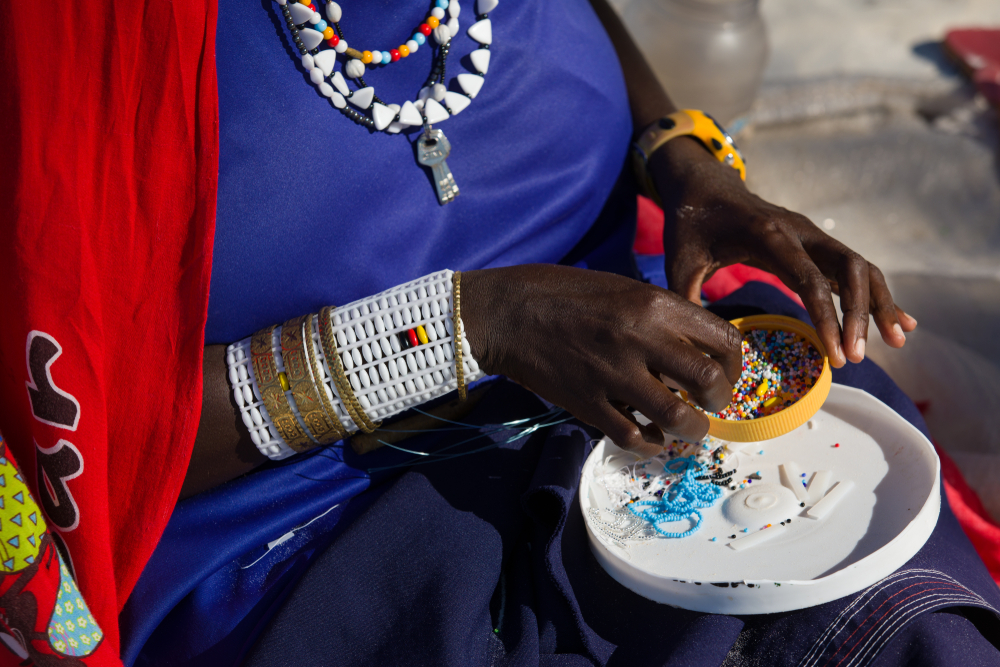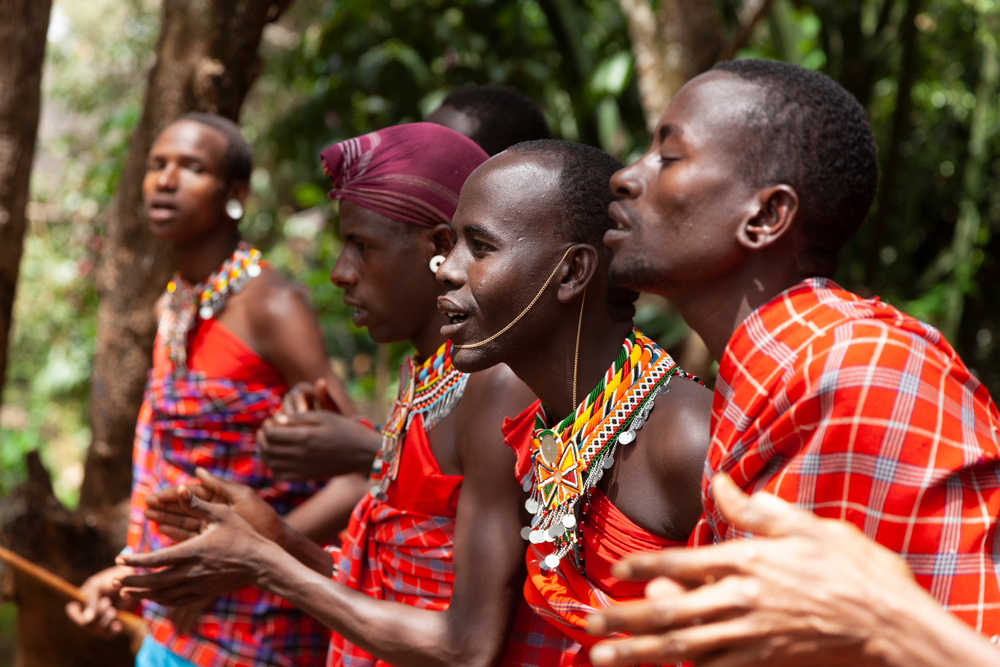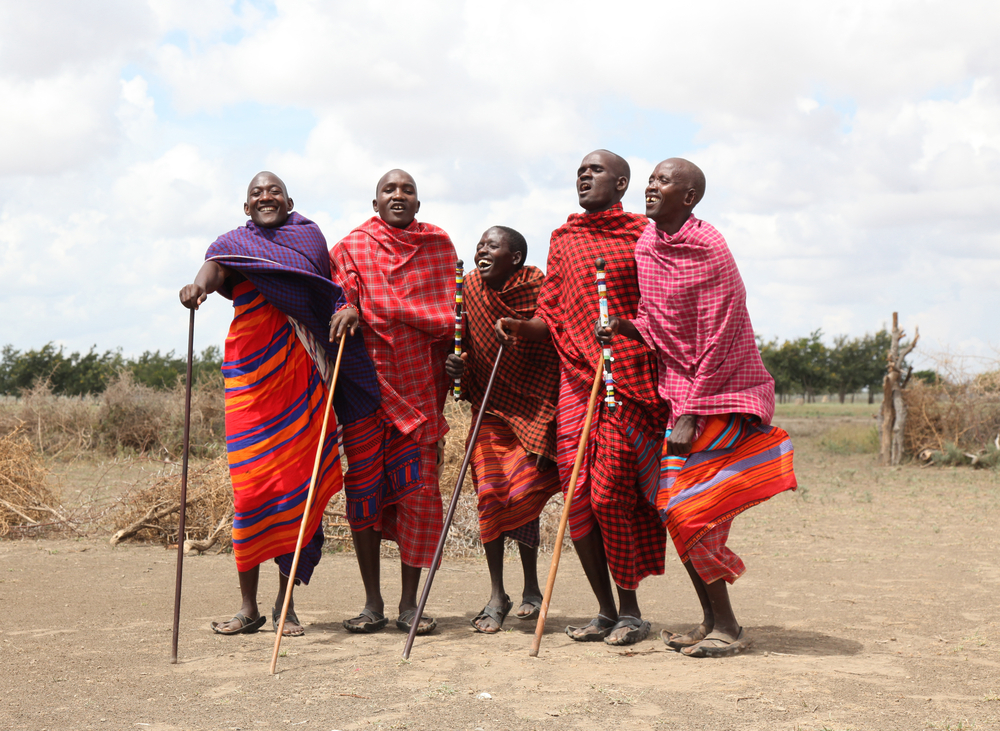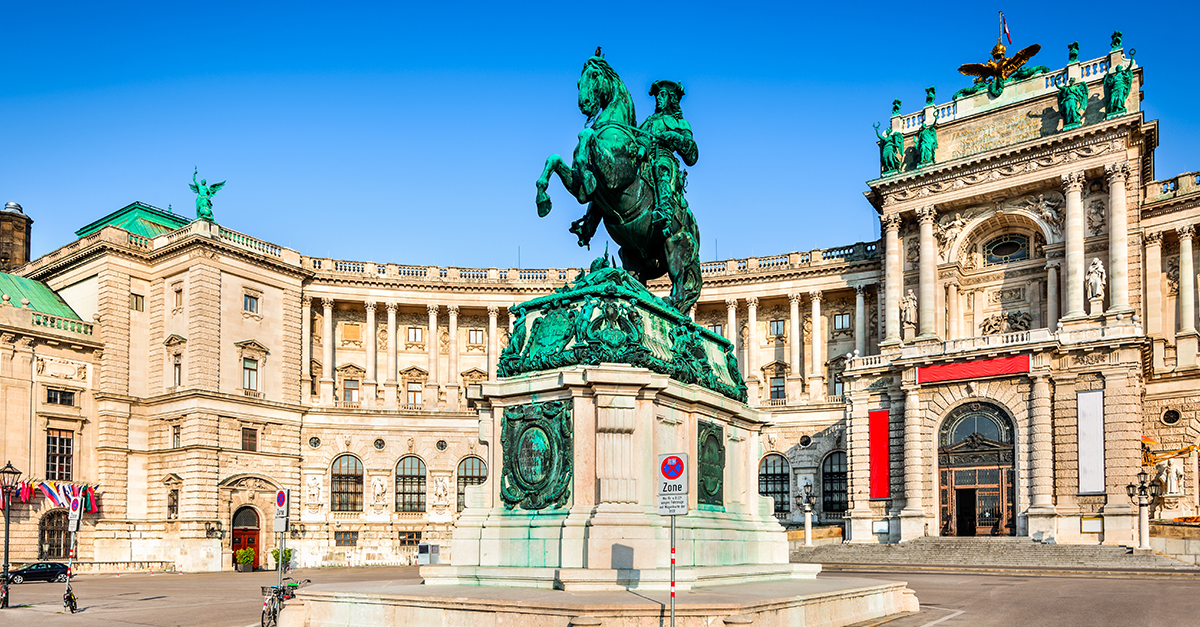The Last Nomads
Humans used to roam far and wide, but since we started farming, most of us settle in one place. But the Maasai people of East Africa continue to live as nomads to this day, rarely settling in any place for long before moving on.

They Invaded
The Maasai originally came the south of Sudan, but in the 15th century they began migrating up the Nile, conquering tribes as they went, until they arrived in the Great Lakes region they inhabit today.
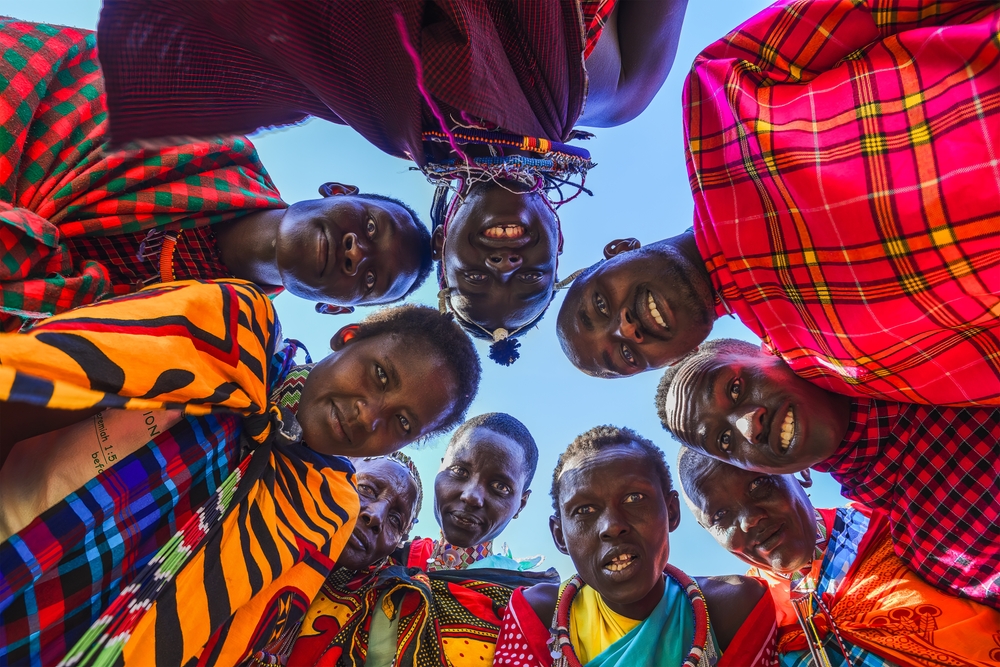 Mongkolchon Akesin, Shutterstock
Mongkolchon Akesin, Shutterstock
They're Cattle Rustlers And Fierce Warriors
The Maasai and related tribes such as the Turkana and the Kalenjin are all known for two things: Cattle and terrifying warriors.
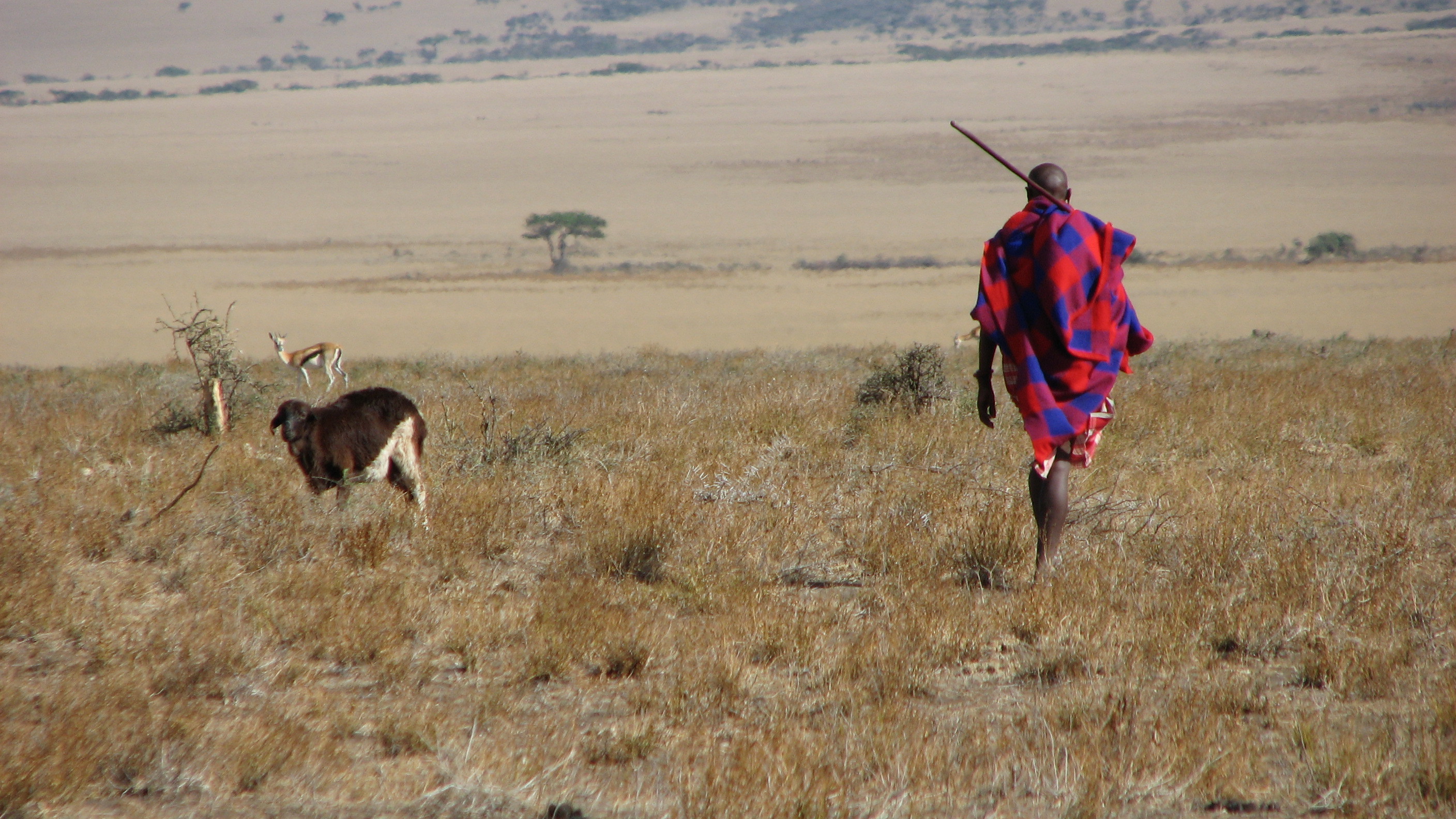 Steve Pastor, Wikimedia Commons
Steve Pastor, Wikimedia Commons
Their Warriors Had A Terrifying Weapon
Maasai raiders used both spears and shields, but the weapon that most struck fear into the hearts of their enemies was the rungu, a wicked throwing club that Maasai warriors could throw accurately from 300 feet.
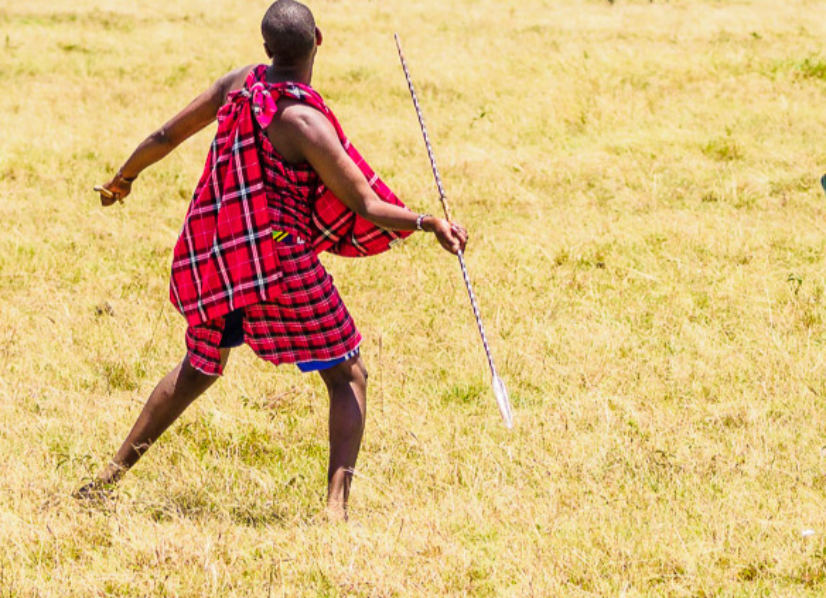 Danijel Mihajlovic, CC BY-SA 4.0 ,Wikimedia Commons
Danijel Mihajlovic, CC BY-SA 4.0 ,Wikimedia Commons
They're Pastoralists
Rather than rely on settling down and farming, the Maasai rely on their cattle as their primary food source. That means that nearly every aspect of Maasai life revolves around their cattle.
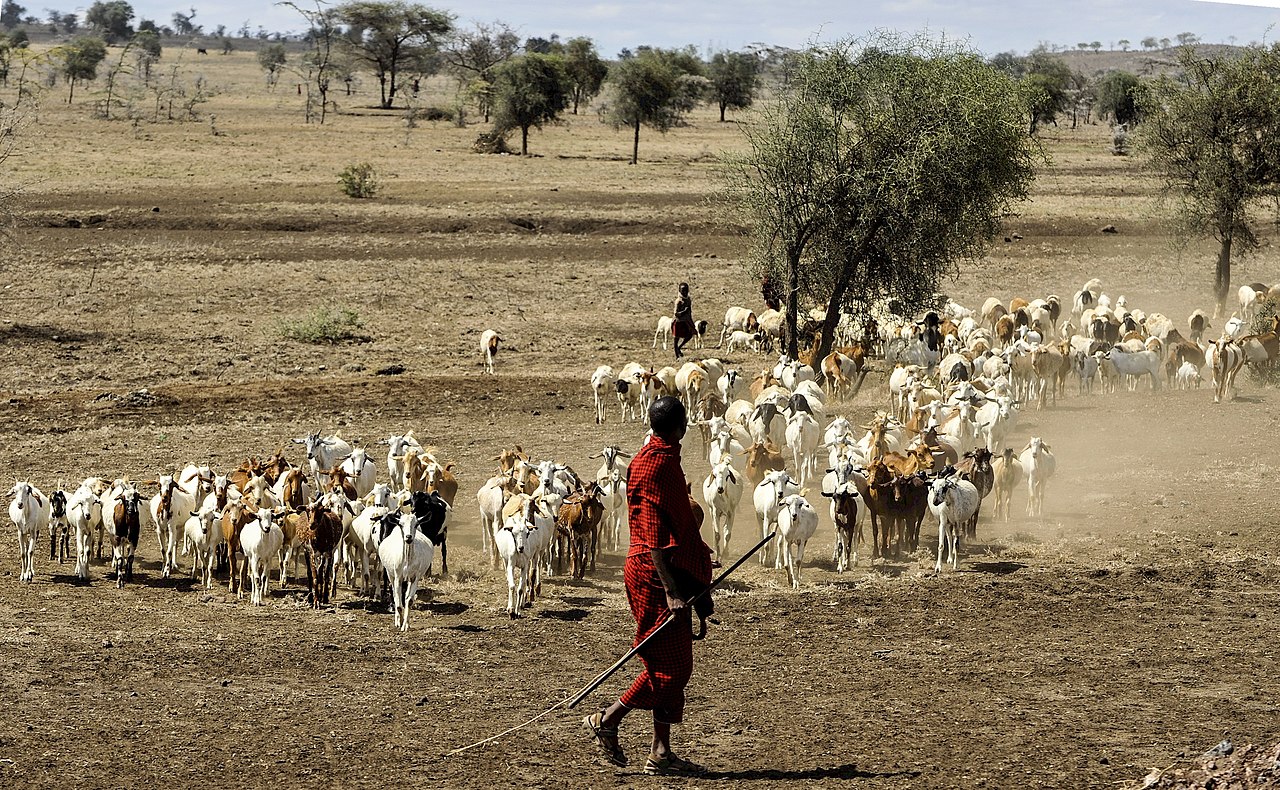 safaritravelplus, Wikimedia Commons
safaritravelplus, Wikimedia Commons
Their Cattle Do Everything
The Maasai's cattle provide all the food they need, but it's not just the milk, meat, and fat that they eat.
They Drink Cow Blood
The Maasai drink cow's blood on occasion, obtained by nicking the jugular vein. They will then mix the blood with milk, though it's usually reserved for special occasions, or to provide extra nourishment to the sick.
They Drink From Gourds
Maasai people will hollow out calabash gourds to use as portable milk jugs.
They Rarely Drink It Raw
The Maasai drink more milk than just about anyone on earth, as it's a staple part of their diet, but they rarely drink it raw. Usually, they drink fermented milk or buttermilk.
They Have A Limited Diet
The only foods Maasai regularly eat that don't come from their cattle are honey and tree bark/roots that are used for medicinal purposes.
 Nagarjun, CC BY 2.0, Wikimedia Commons
Nagarjun, CC BY 2.0, Wikimedia Commons
They Don't Only Have Cows
Though they do mainly keep cows, Maasai also herd goats and sheep, included the aptly named Red Maasai sheep.
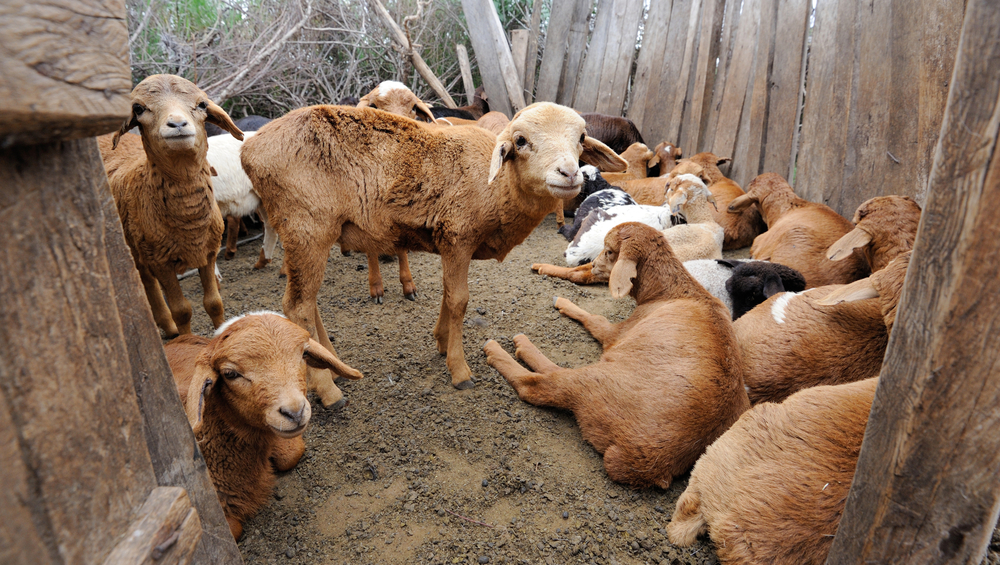 Volodymyr Burdiak, Shutterstock
Volodymyr Burdiak, Shutterstock
Their Sheep Don't Make Wool
Don't go thinking the Red Maasai sheep make beautiful wool sweaters—they're a fat-tailed species, which means that they don't produce wool. The Maasai primarily keep them for their meat.
Meat Is A Special Treat For Them
Though drinking milk is a regular occurrence, meat is less common. Only for special occasions and rituals will the Maasai slaughter one of their bulls, goats, or lambs.
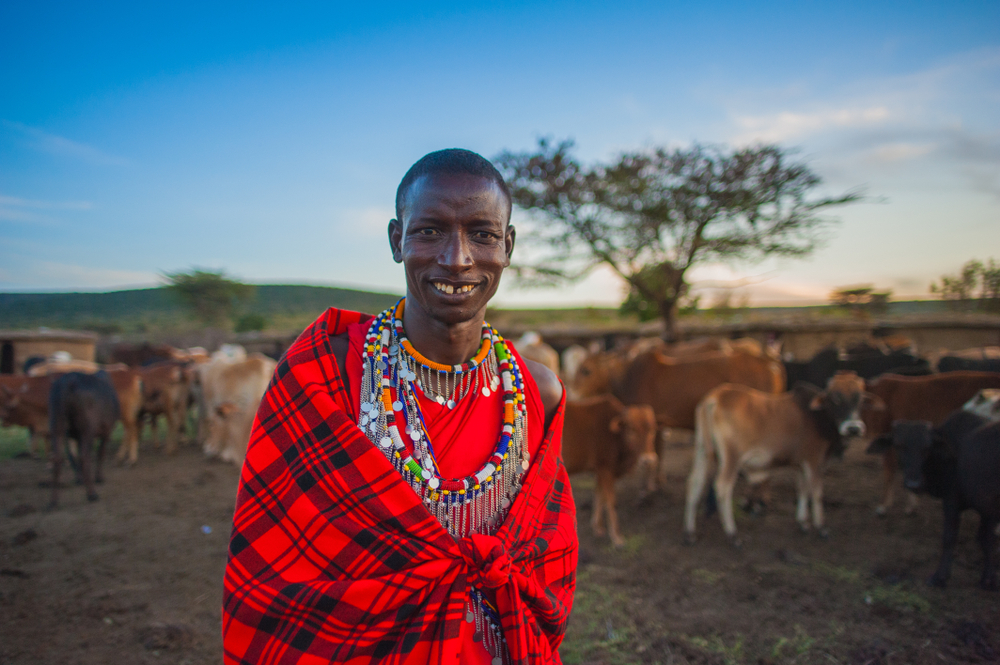 Najmie Naharuddin, Shutterstock
Najmie Naharuddin, Shutterstock
They Don't Just Use Animals For Food
The Maasai use animal hides for bedding, clothing, and other textiles—but that's not all they find use for.
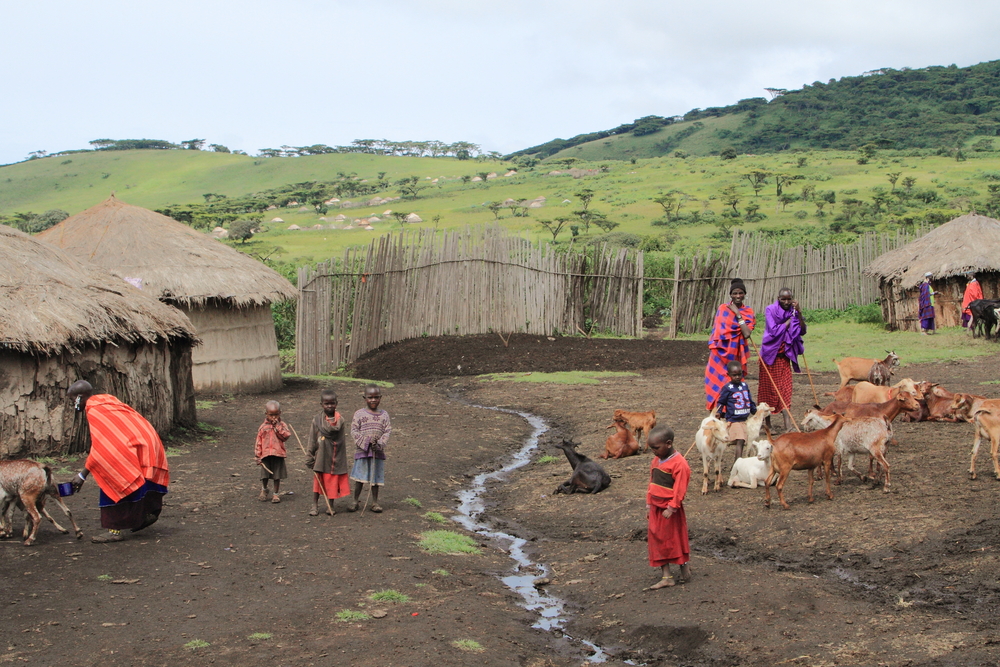 Abdelrahman Hassanein, Shutterstock
Abdelrahman Hassanein, Shutterstock
Their Houses Don't Smell Great
Maasai use cow dung and cow urine as a coating for their houses, which are otherwise made of mud, sticks and grass.
It Serves A Purpose
They Maasai don't just use the dung and urine as potpourris—it keeps bugs aways and insulates the interior from the blazing sun outside. At what cost though...
At Least They Don't Last Long
As nomads who constantly need to move from one place to the next with their cattle, Maasai shelters are thankfully not meant to be permanent, and can generally erected and deconstructed very quickly.
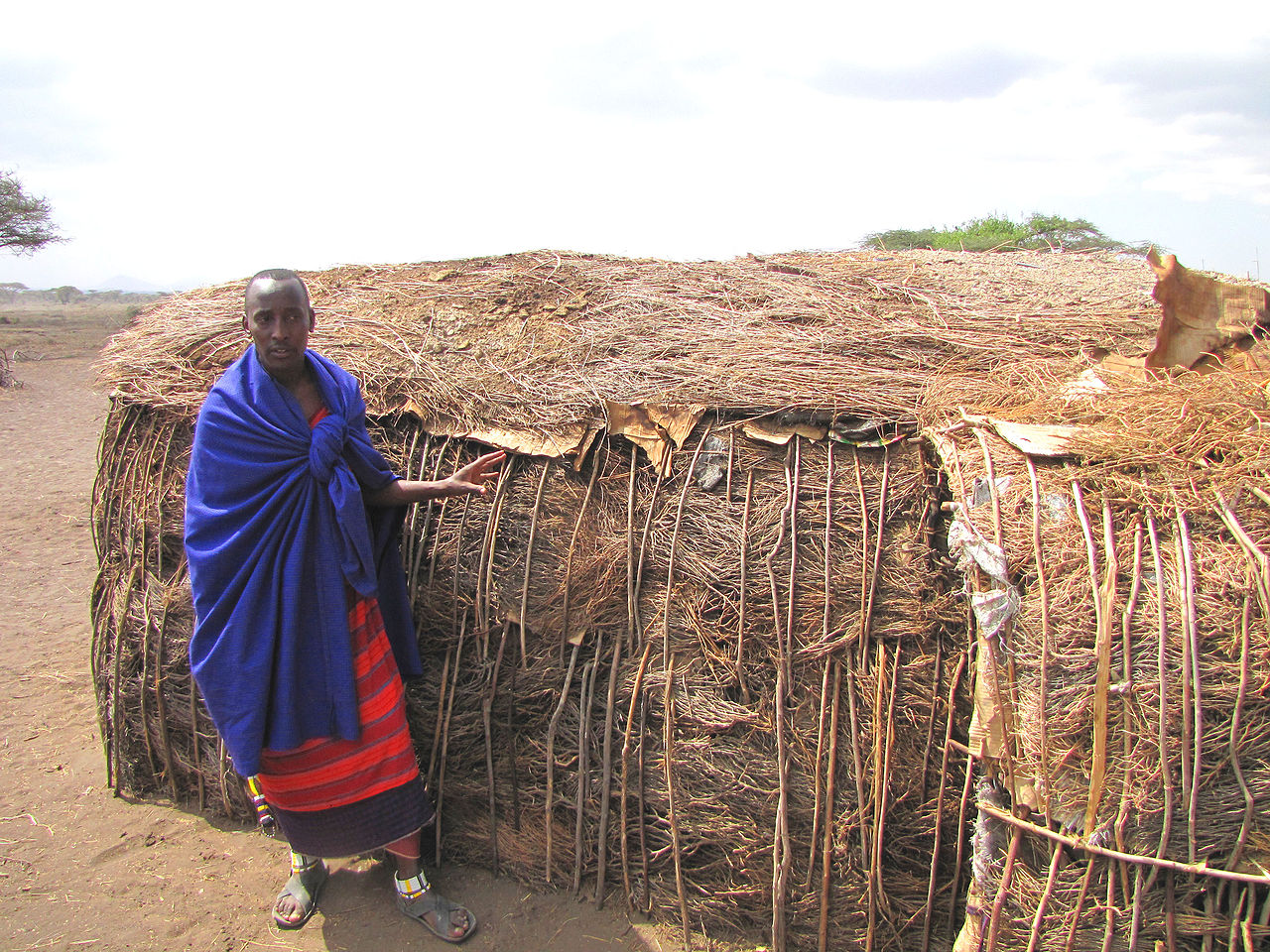 D. Gordon E. Robertson, CC BY-SA 3.0, Wikimedia Commons
D. Gordon E. Robertson, CC BY-SA 3.0, Wikimedia Commons
They Build Moving Villages
When the Maasai find new grazing lands, the women will build the houses while the men build a circular fence called an Enkang around the encampment to protect the cattle from wild animals at night.
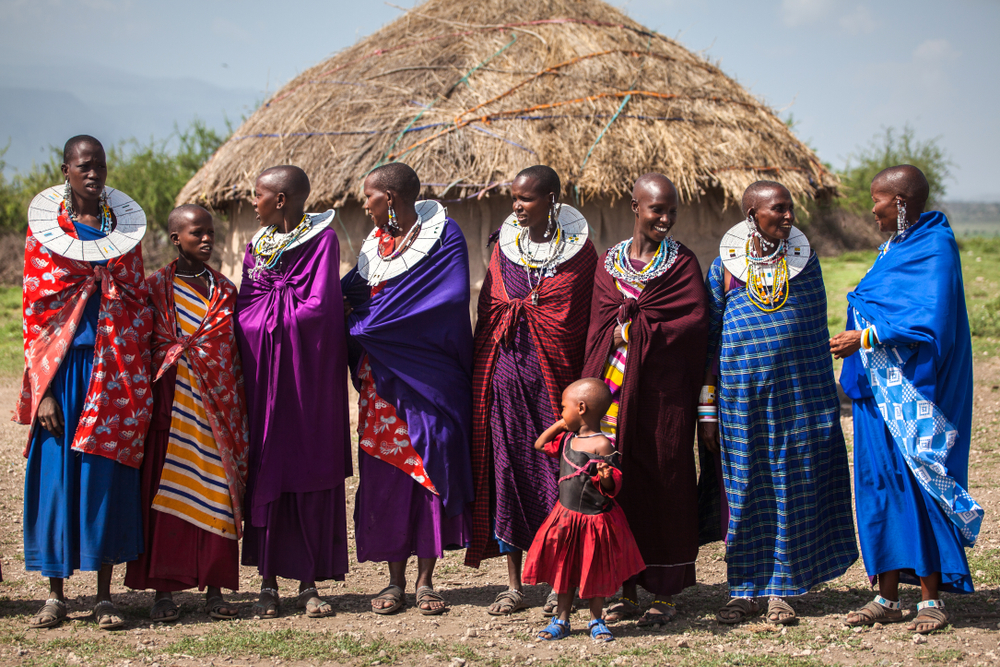 Borkowska Trippin, Shutterstock
Borkowska Trippin, Shutterstock
They Speak Maa
The Maasai get their name from the language they speak, maa, in which Maasai just means "people who speak maa".
They Live In A Patriarchy
Maasai culture is heavily patriarchal, and women are viewed as property, with men taking several wives.
They Measure Wealth Differently
Money doesn't mean much to the Maasai. Instead, they measure a man's wealth with three things: wives, children, and cattle.
They Need Both
For a baseline, a herd of 50 cattle is considered respectable. As far as wives and kids, the more the better. But don't go putting all your eggs in one basket!
A man who has 50 cattle but no wife, or a man with a wife and children but no cattle, is considered poor.
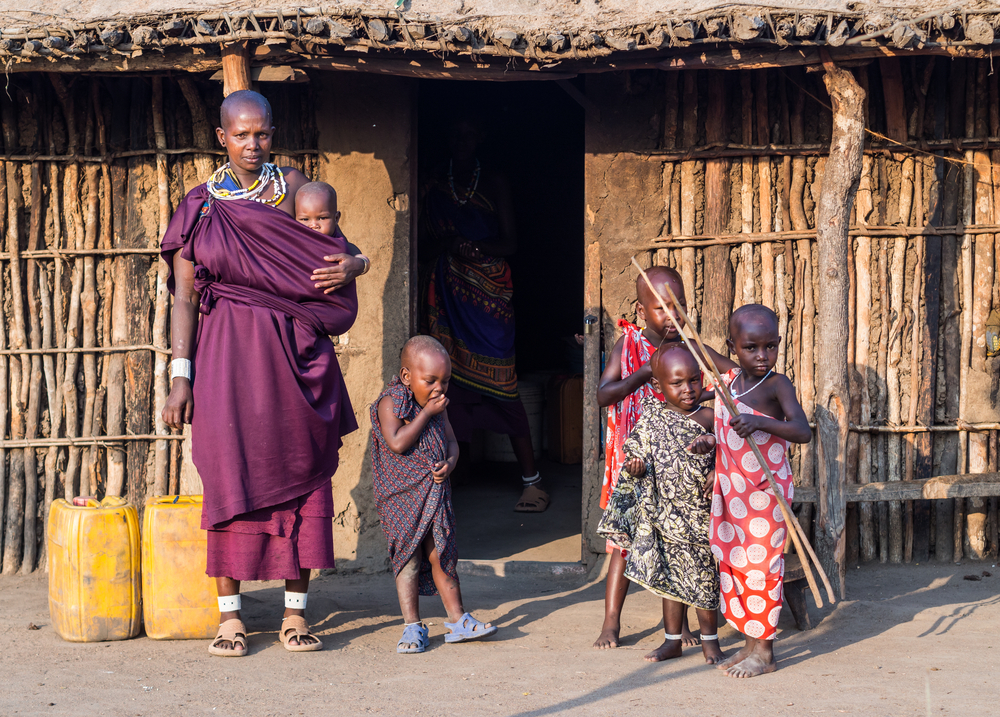 Magdalena Paluchowska, Shutterstock
Magdalena Paluchowska, Shutterstock
They Were A Big Deal
When European colonists began arriving in Africa, the Maasai were the dominant tribe in their region. They were powerful enough that, unlike the majority of tribes, they have been able to keep the same traditions and lifestyle that existed before colonization.
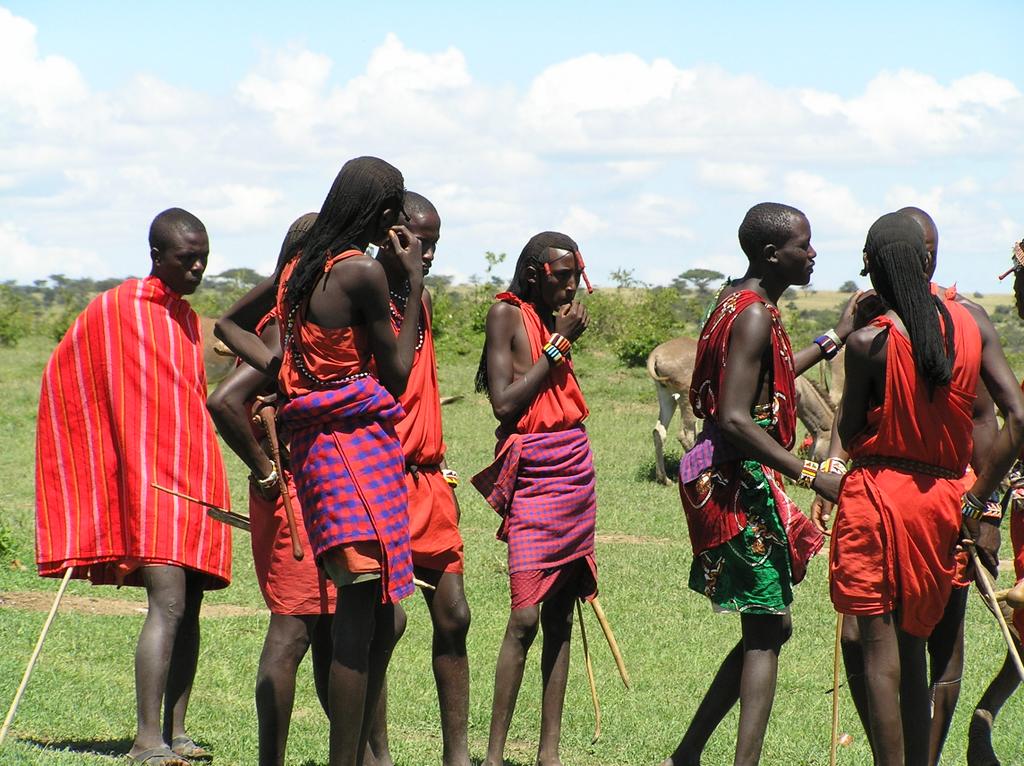 Unknown Author, CC BY-SA 3.0, Wikimedia Commons
Unknown Author, CC BY-SA 3.0, Wikimedia Commons
They Need A Lot Of Land
There's a reason the Maasai warriors are so reknowned: They need a lot of land. One of the last nomadic tribes in Africa, they Maasai rely on their cattle herds for their livelihood, so they constantly have to move to find new pastures.
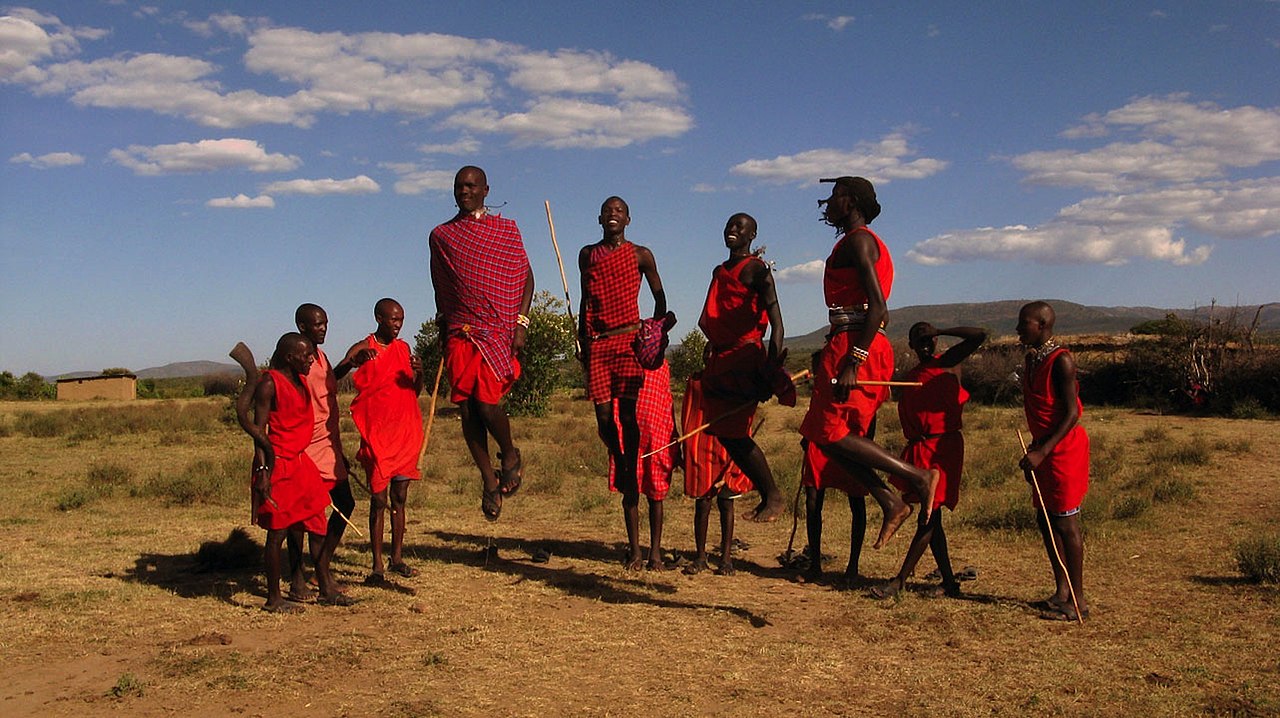 safaritravelplus, Wikimedia Commons
safaritravelplus, Wikimedia Commons
They Hit Their Peak In The 1800s
By the mid-19th century, Maasai influence was at its peak. Their lands covered nearly the entire Great Rift Valley, including most of modern Kenya and Tanzania.
Unfortunately, the Maasai were in for hard times ahead.
The Destruction
The Maasai call the period of 1883-1902 the "Emutai," which roughly translations to "destruction," and its effects are still felt in Maasai culture today.
Outbreak
A smallpox outbreak decimated the population. One German doctor in the region claimed that 50% of the people he saw had pockmarked faces from the disease. But that was just the start of the destruction.
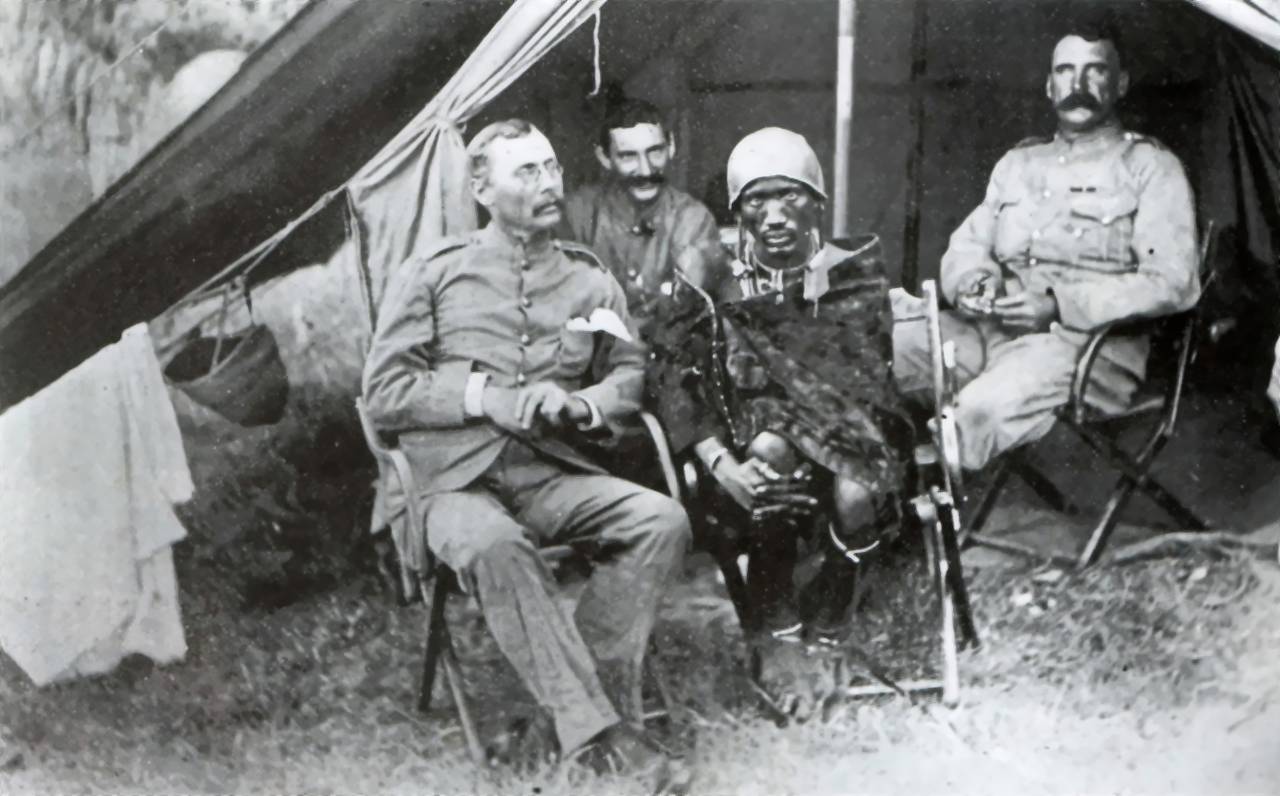 Unknown Author, Wikimedia Commons
Unknown Author, Wikimedia Commons
The Cows Got The Worst Of It
Between epidemics of contagious bovine pleuropneumonia and rinderpest viral infections, it's estimated that 90% of cattle in the region—and about half of wild bovines—perished.
For the Maasai, that was very bad news, but it could still get worse.
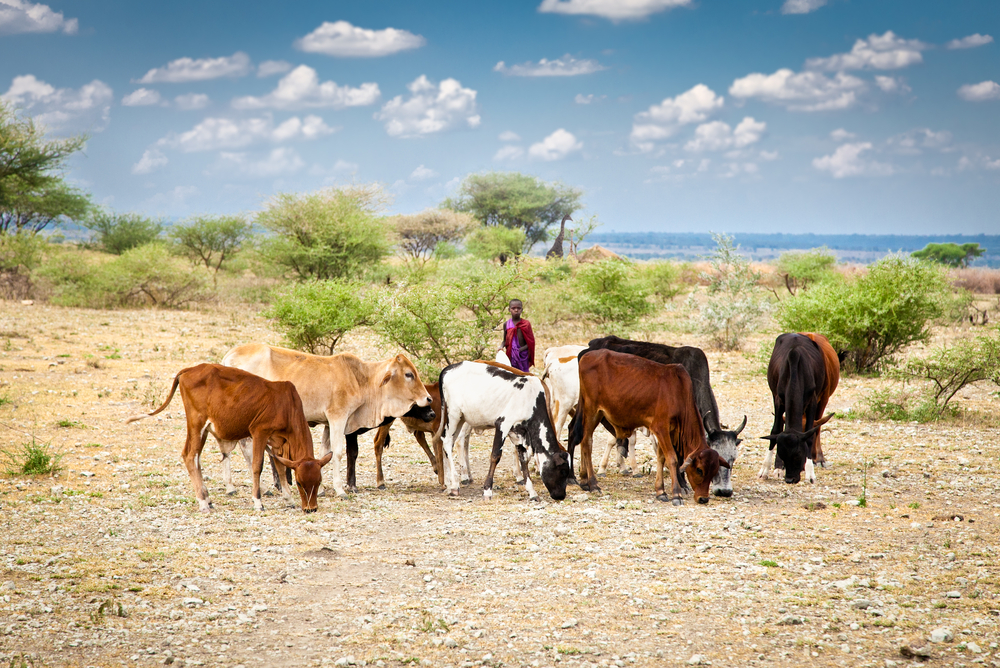 Aleksandar Todorovic, Shutterstock
Aleksandar Todorovic, Shutterstock
The Rains Failed
When it rains, it pours—or in this case, doesn't pour. The rains failed in Maasai territory in both 1897 and again the following year in 1898.
Each of these disasters would have been brutal. Three together was hard to comprehend.
Their Population Was Decimated
It's estimated that two out of every three Maasai perished during the Emutai. And sadly, things weren't going to get much better.
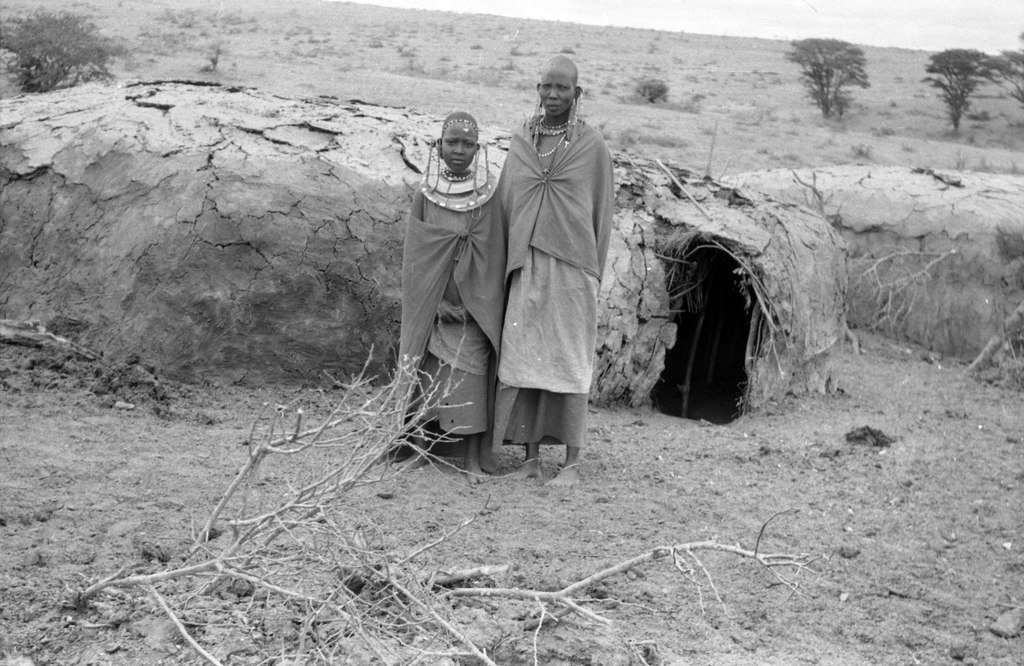 Zdravko Pečar, CC BY-SA 4.0 , Wikimedia Commons
Zdravko Pečar, CC BY-SA 4.0 , Wikimedia Commons
They Weren't The Alpha Anymore
Thanks to their fierce warriors, the Maasai had all the best land in the Great Rift Valley—and that was the land that the Europeans wanted when they showed up.
In 1904, the Maasai agreed to give up the best of their land to the Europeans.
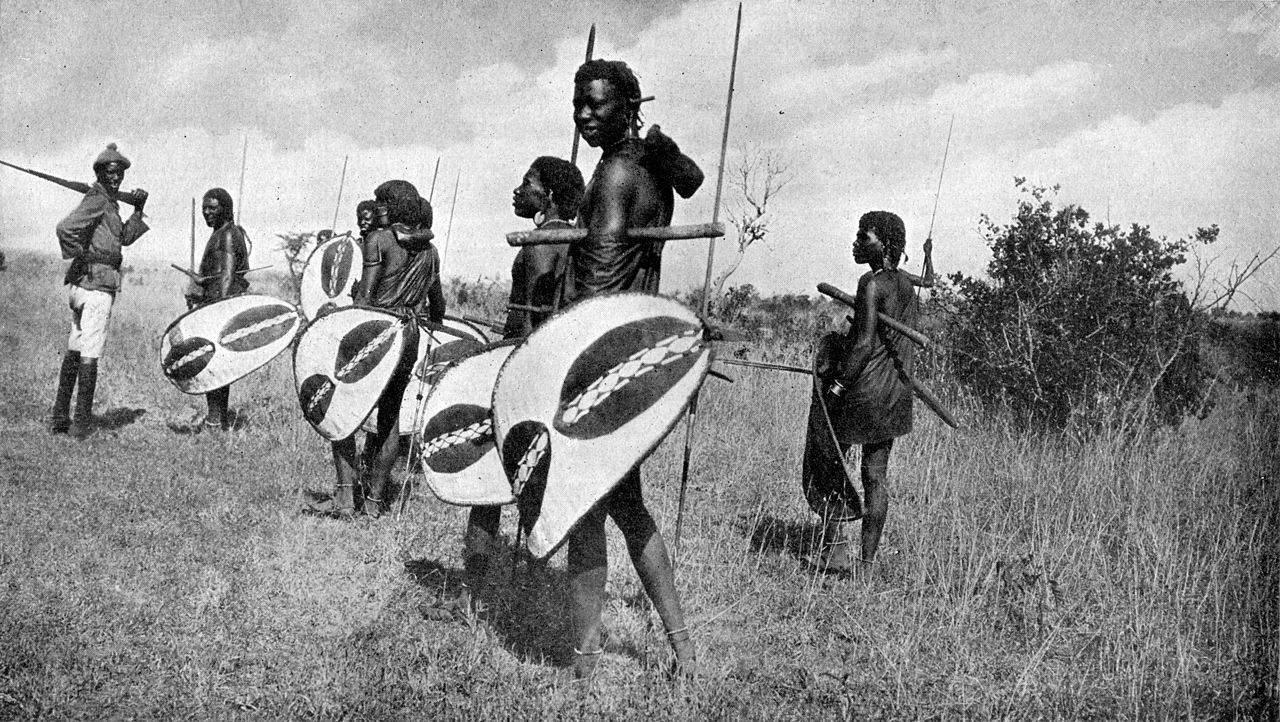 Paul Thompson, Wikimedia Commons
Paul Thompson, Wikimedia Commons
They're Trying To Keep Their Way Of Life
Both the Tanzanian and Kenyan governments have long tried to make the nomadic Maasai settle down and adopt farming, but the Maasai not only resist every time, but they demand grazing rights in each country's national parks.
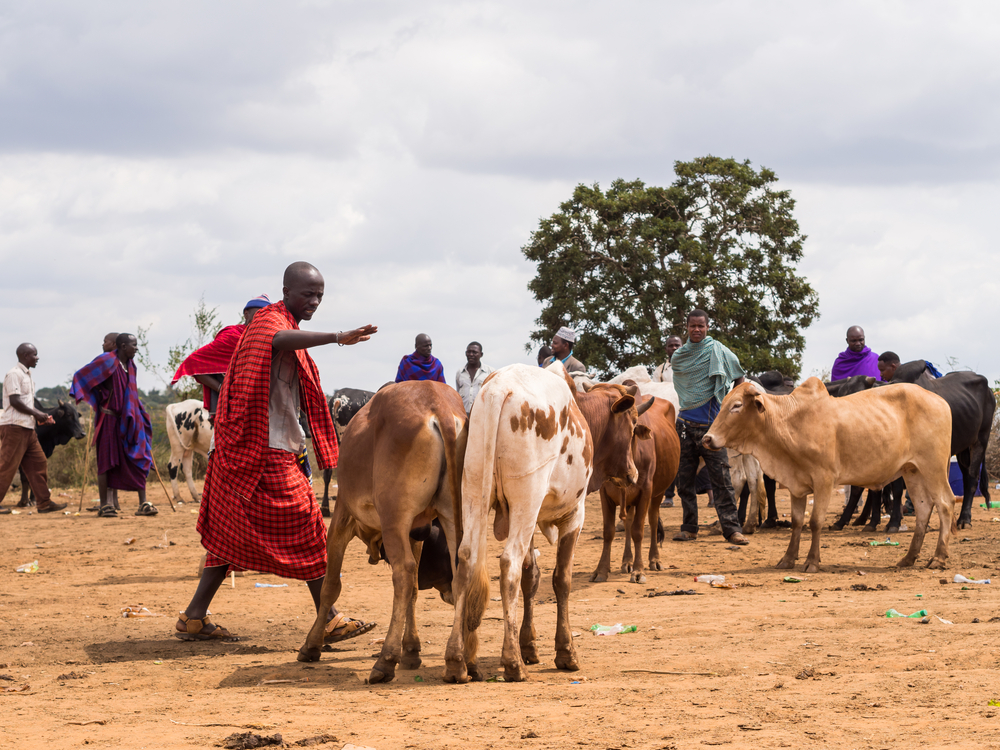 Magdalena Paluchowska, Shutterstock
Magdalena Paluchowska, Shutterstock
Their Lifestyle Is Changing
Maasai have relied on their cattle for centuries, but with cattle numbers dwindling, they have come to rely more and more on staple crops like sorghum, rice, potatoes, and cabbage, which they call "goat leaves".
 RahimMngwaya, CC BY-SA 4.0, Wikimedia Commons
RahimMngwaya, CC BY-SA 4.0, Wikimedia Commons
It Hasn't Been An Easy Process
Getting any Maasai to adopt farming has been a slow process, as agriculture is culturally looked down upon. However, cultivation started integrating into Maasai society as displaced women from the farming WaArusha and WaMeru began to marry Maasai men.
They Are Monotheistic
The Maasai worship a single deity, Enkai, with a dual nature. There is Enkai Narok, the Black God, and Enkai Na-nyokie, the Red God.
Good Vs. Evil
The Maasai's Black God is benevolent and represents goodness, which the Red God is vengeful and violent.
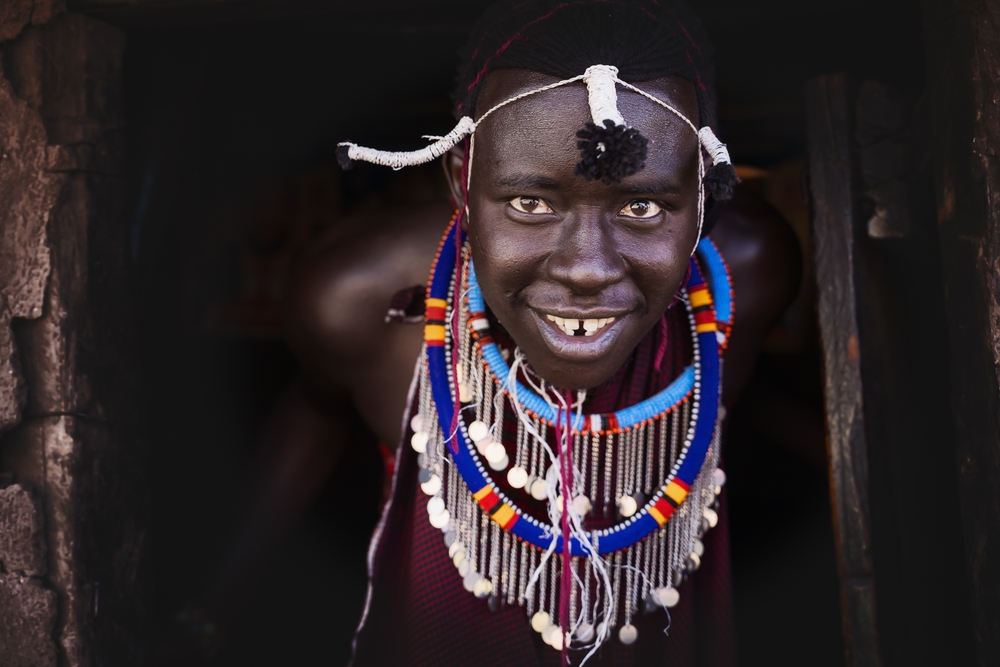 Mongkolchon Akesin, Shutterstock
Mongkolchon Akesin, Shutterstock
They Leave Out Their Dead
The Maasai believe that burying a person in ground will taint the soil, so only great chiefs are put to rest under the earth. For most people, there is no funeral ceremony at the end of life, and bodies are left in the fields for scavengers—but it's not as bad as it seems.
They Practise Predator Burial
At the end of life, the Maasai will cover the deceased's body in blood and fat to draw predators before leaving it in a field. They believe this is better for the land—and it certainly brings each Maasai into Africa's food chain in a very real way.
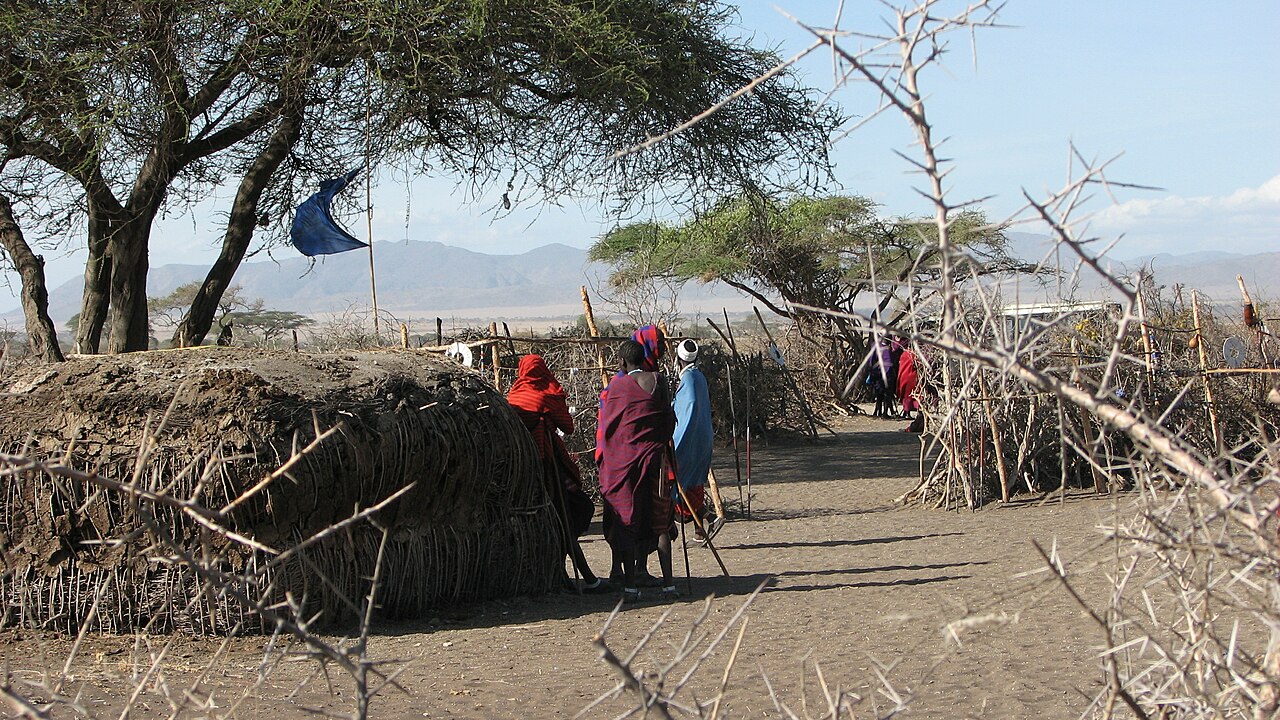 Steve Pastor, Wikimedia Commons
Steve Pastor, Wikimedia Commons
It Creates Demons
If no predators have picked at a body after two days, then the Maasai believe engooki, a curse, has befallen them and their family.
They Have Elaborate Ear Adornments
Both Maasai men and women take part in the practice of piercing and stretching the earlobes, often adorning them with thorns, twigs, stones, and elephant tusks. Or, more recently, things like film canisters.
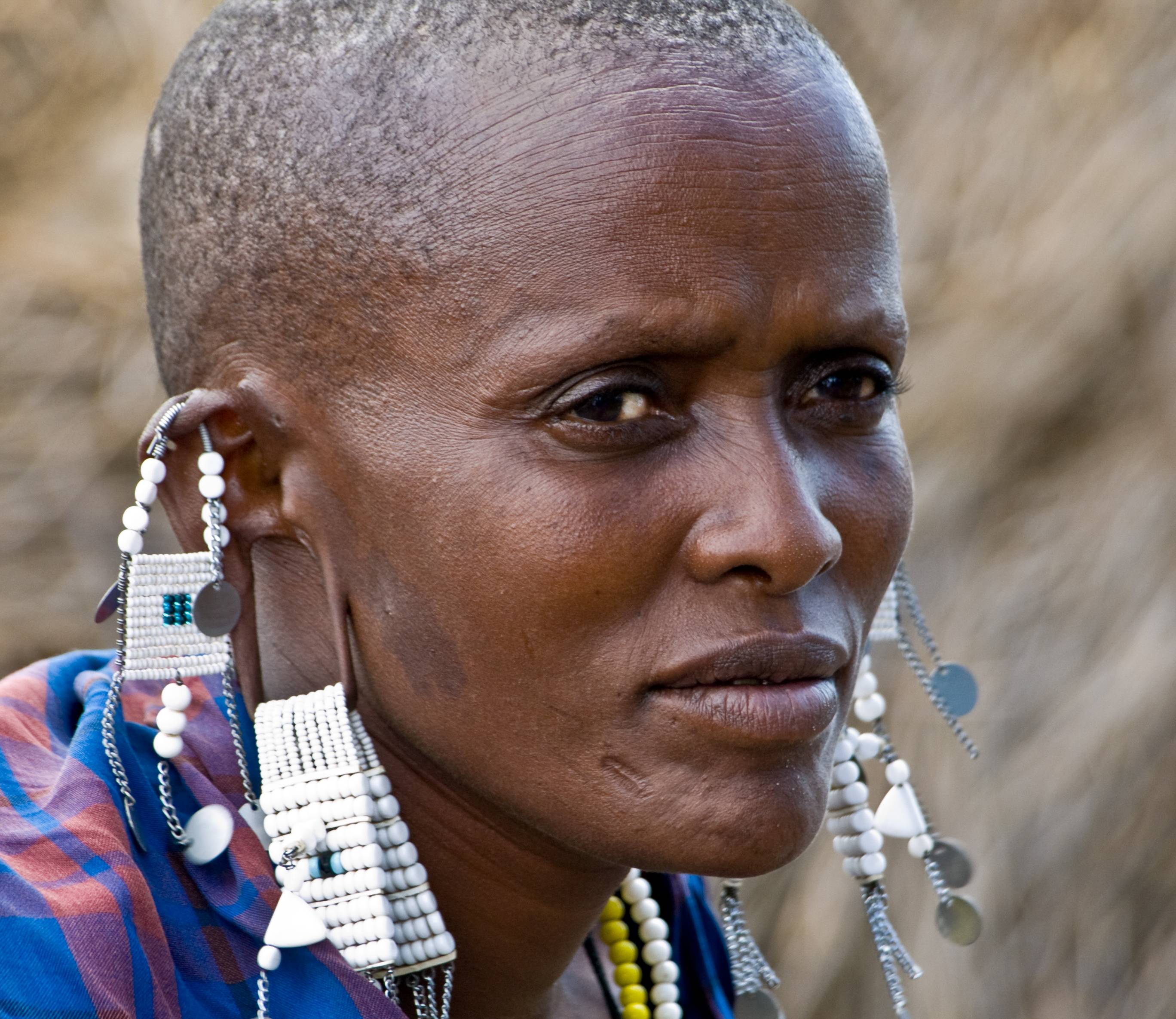 William Warby, CC BY 2.0 , Wikimedia Commons
William Warby, CC BY 2.0 , Wikimedia Commons
They Are Named After Three Moons
Maasai babies receive their name when they reach their third moon, after which their head is shaved apart from a tuft of hair.
Only Warriors Wear Long Hair
Most Maasai wear their hair cut short, but warriors proudly grow their hair long, which they weave into many braids and spend hours grooming and styling.
Clothing Means A Lot
In Maasai culture, your clothing represents both your ethnicity and your social status. Clothing also takes part in many rituals, such as how young men will wear black for months after their manhood ceremony.
The Shúkà Is Their Iconic Garment
A Shúkà is a large, sheet-like garment, typically red and often adorned with bright patterns and colors. Other examples of Maasai dress include the dress-like kanga and a breezy, sarong-like garment called a kikoi that is worn more frequently near the coast.
They Make Jewelry For Tourists
Tourism has affected the Maasai's nomadic way of life, but they are adapted. Many Maasai make elaborate jewelry to sell to tourists.
They Love Music
The Maasai love music, but they don't use any instruments except for large horns that are used for special songs. The majority of their music is vocal, with a chorus providing rhythms and harmonies, while a song leader, called the olaranyani, sings the melody.
They Love To Dance
They may not use instruments, but Maasai love to jump and dance, and the beads they wear on their clothing add jingling to their songs.

